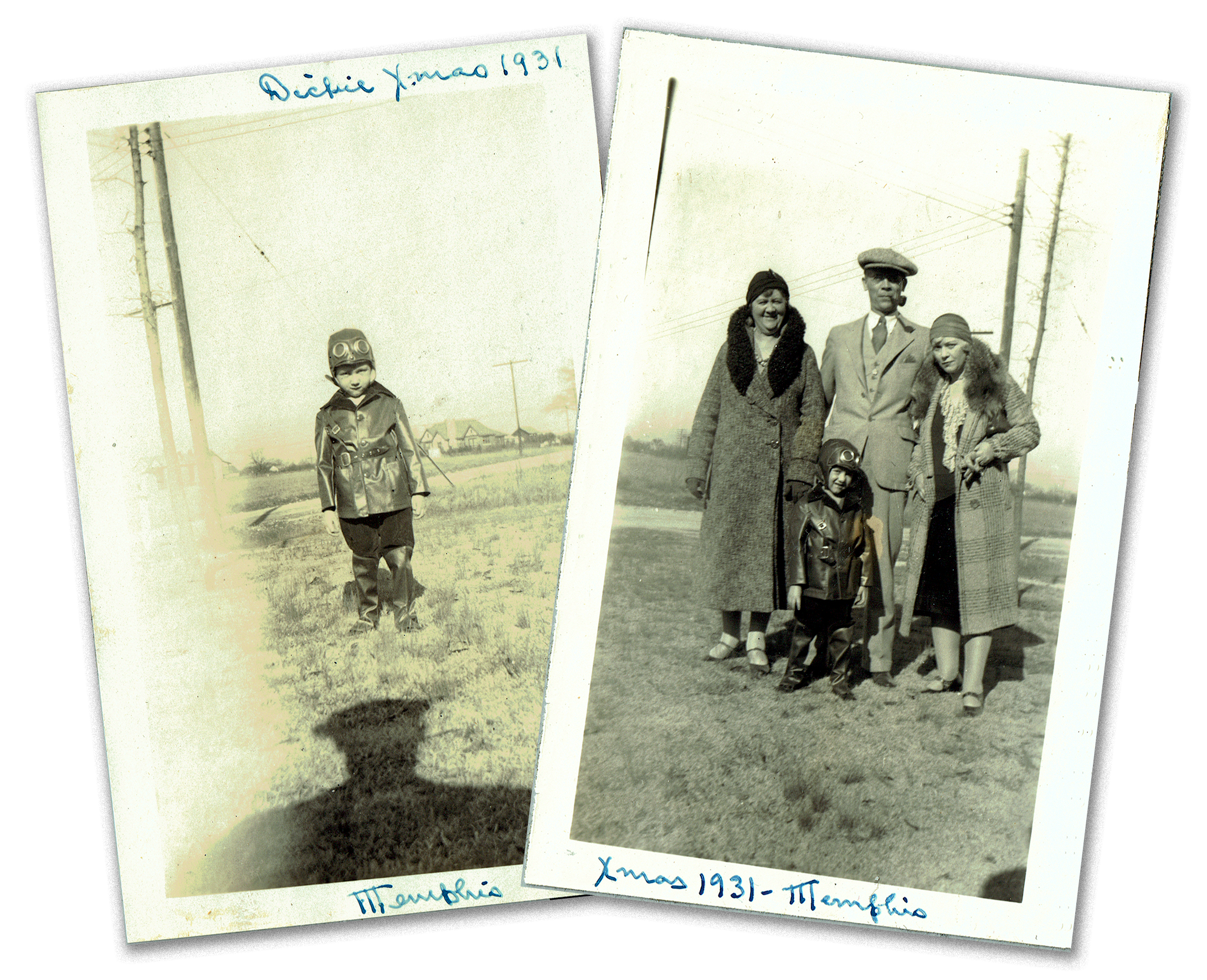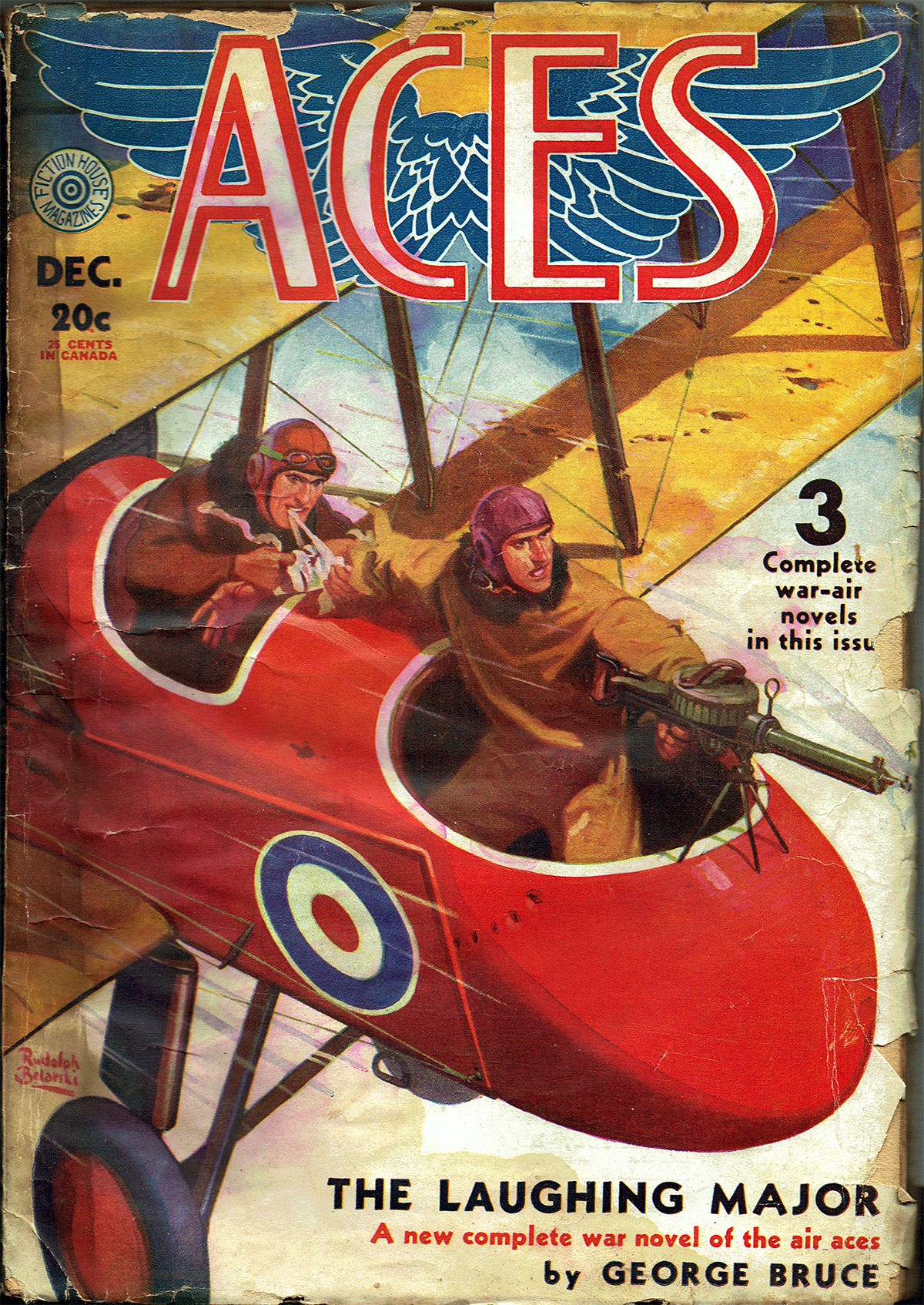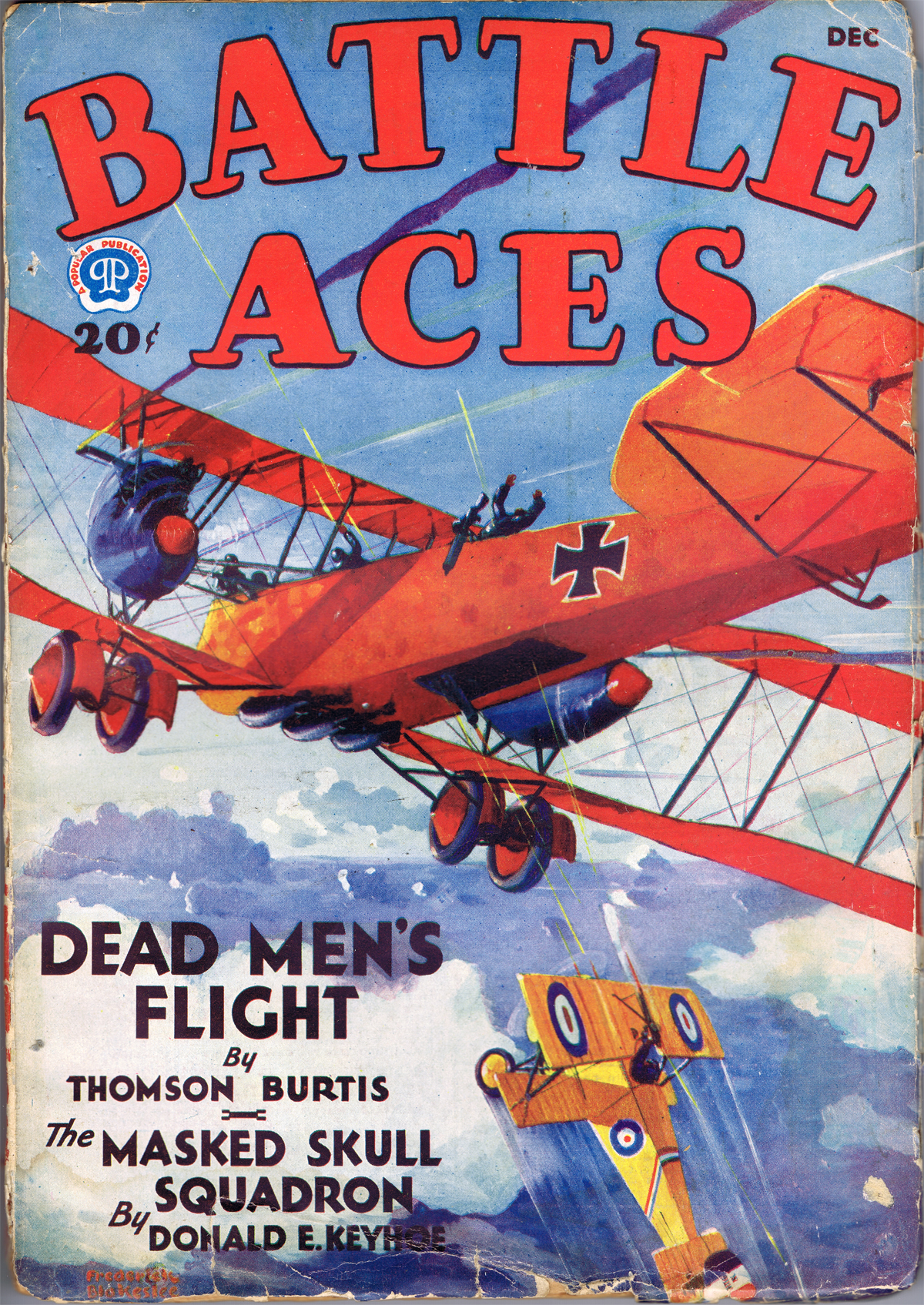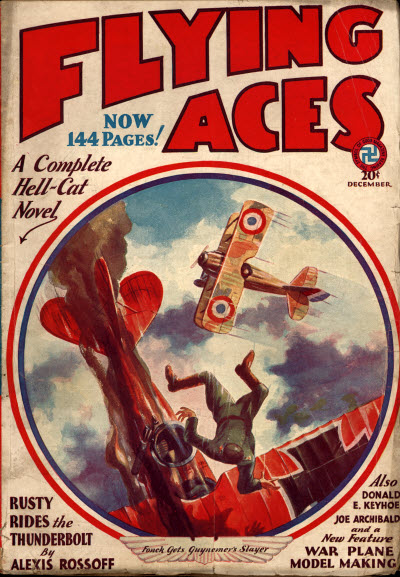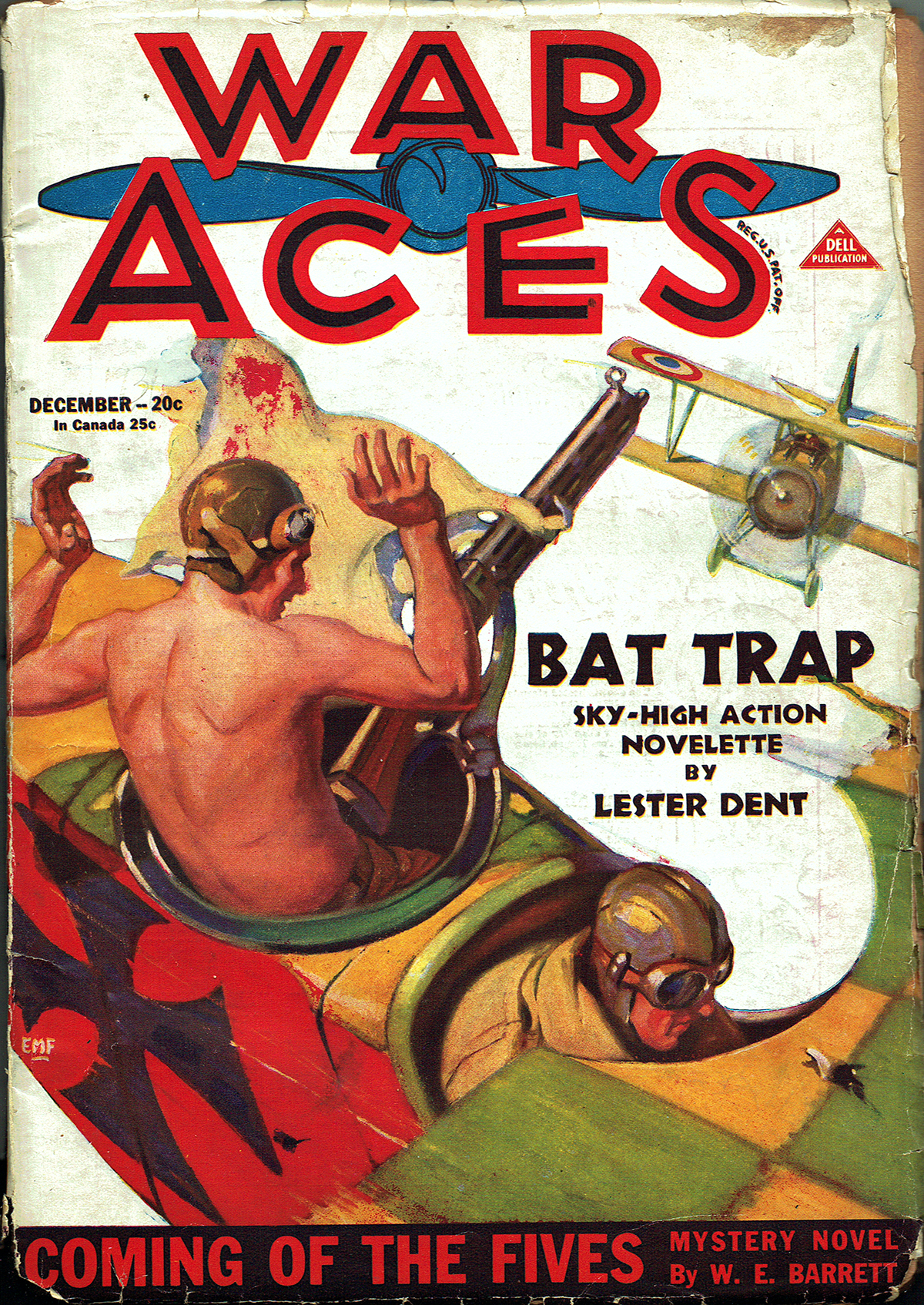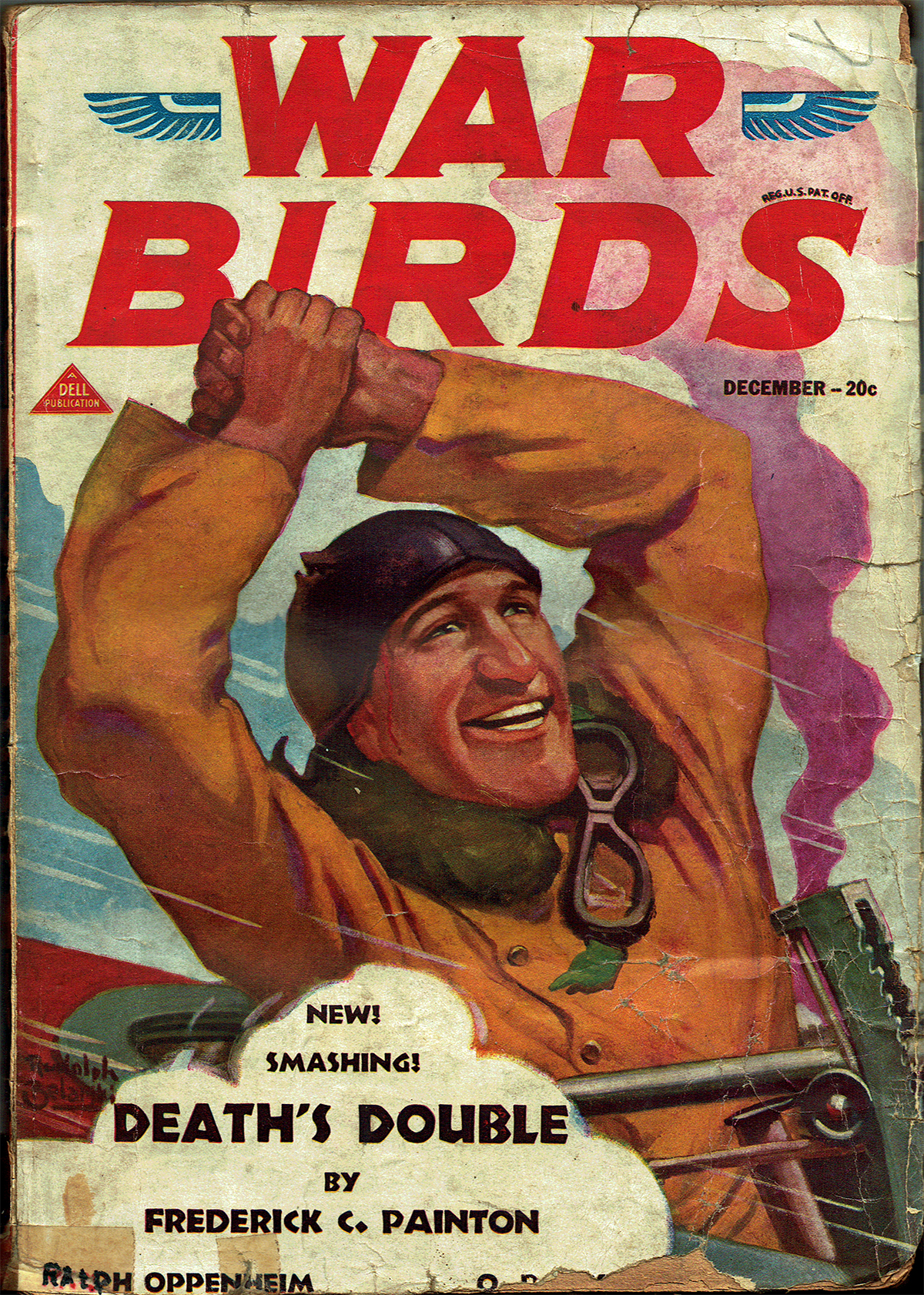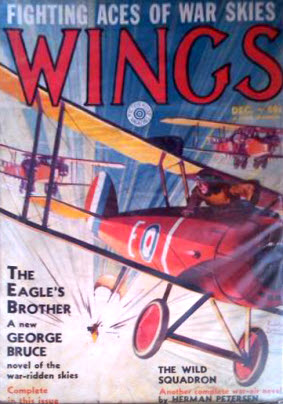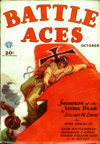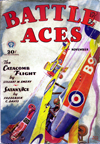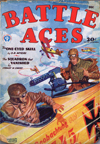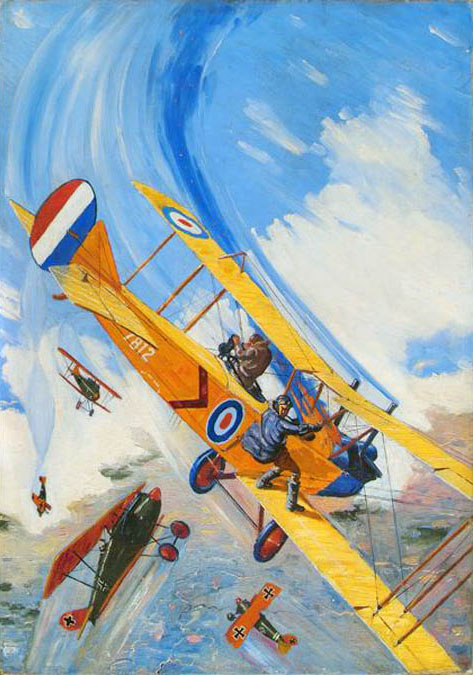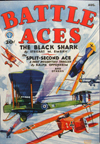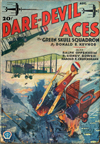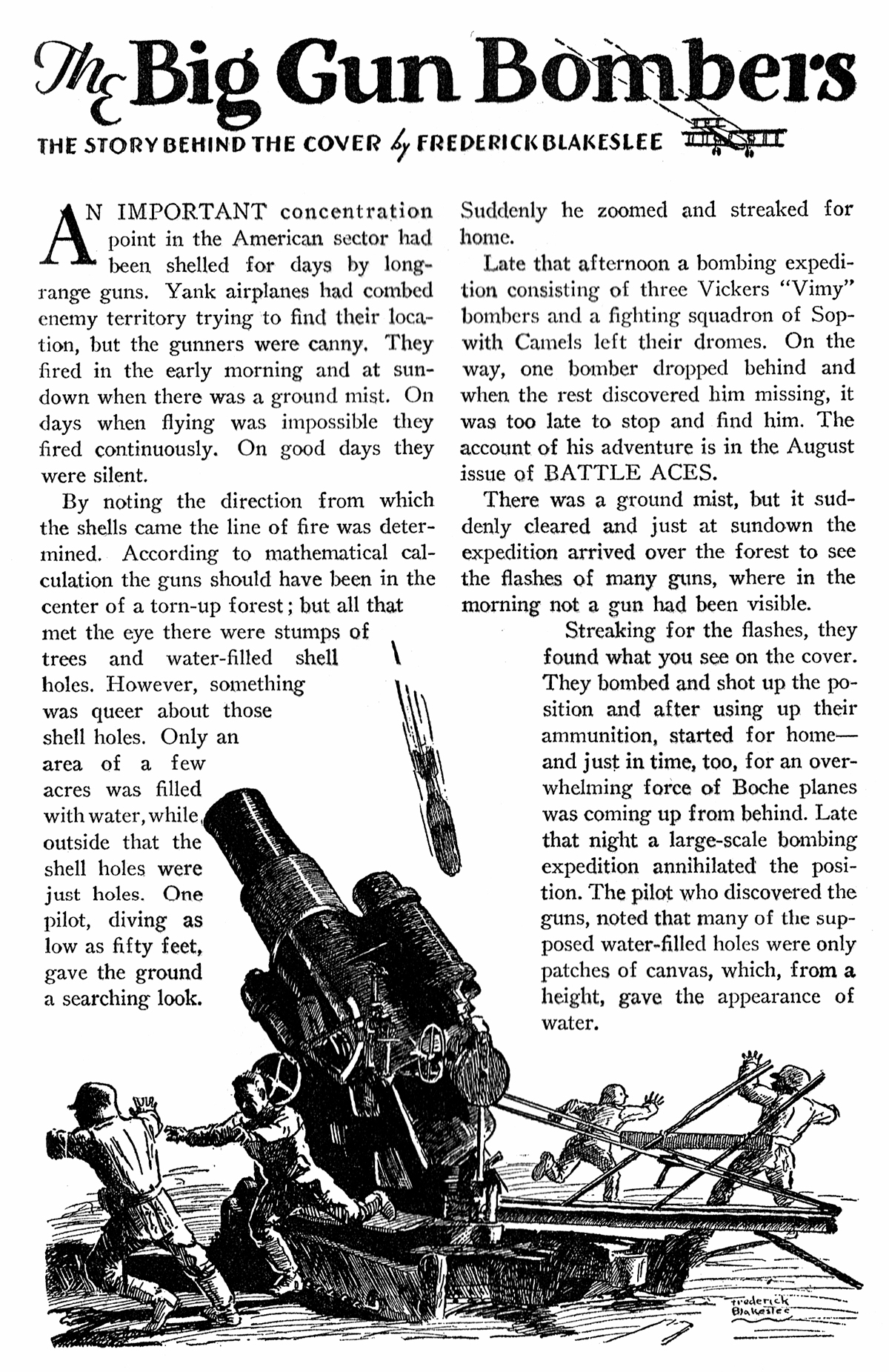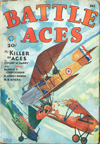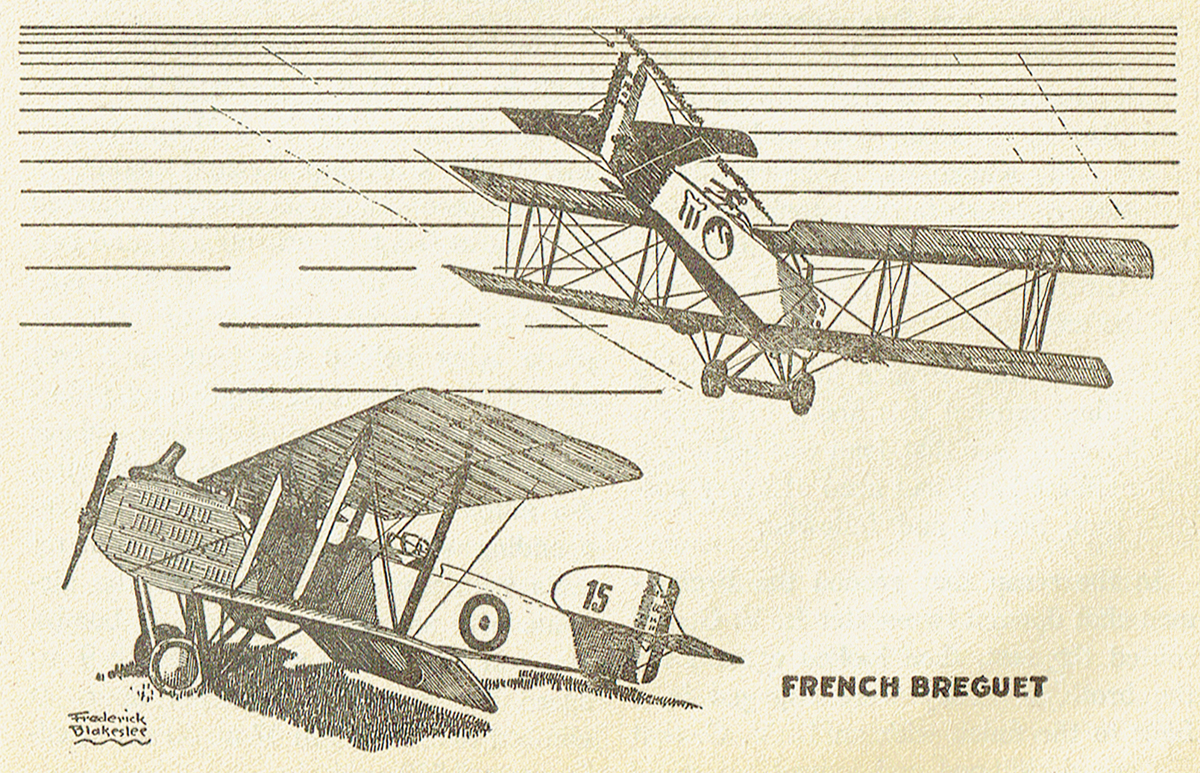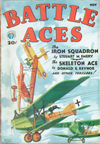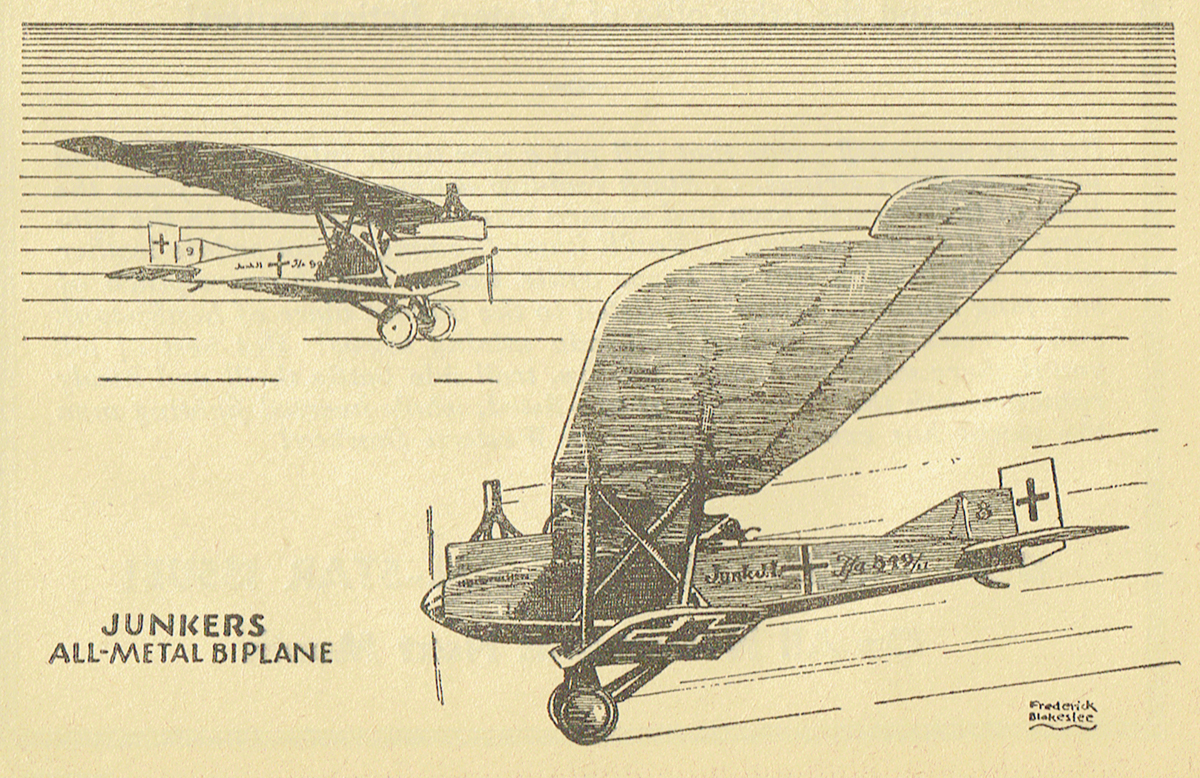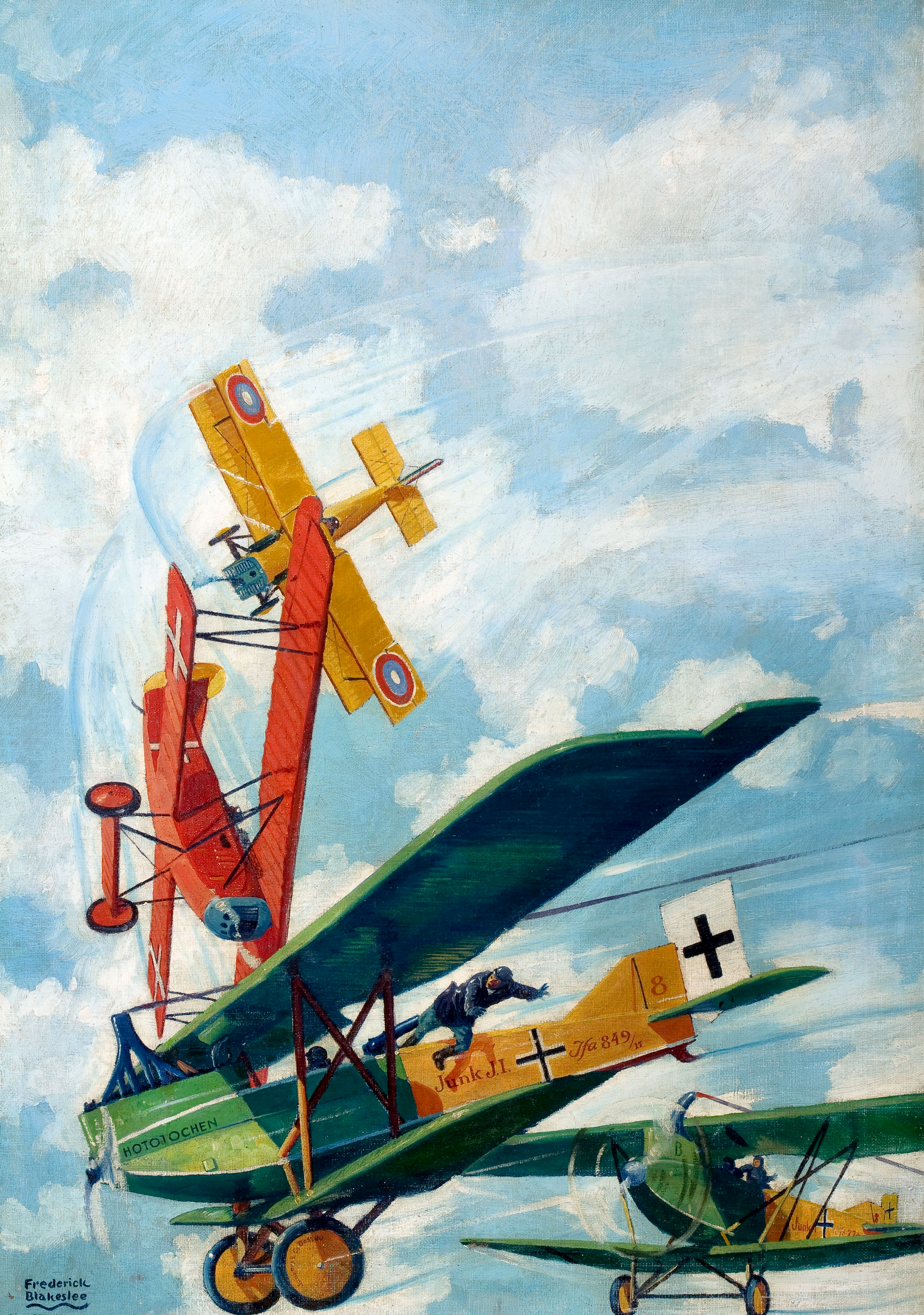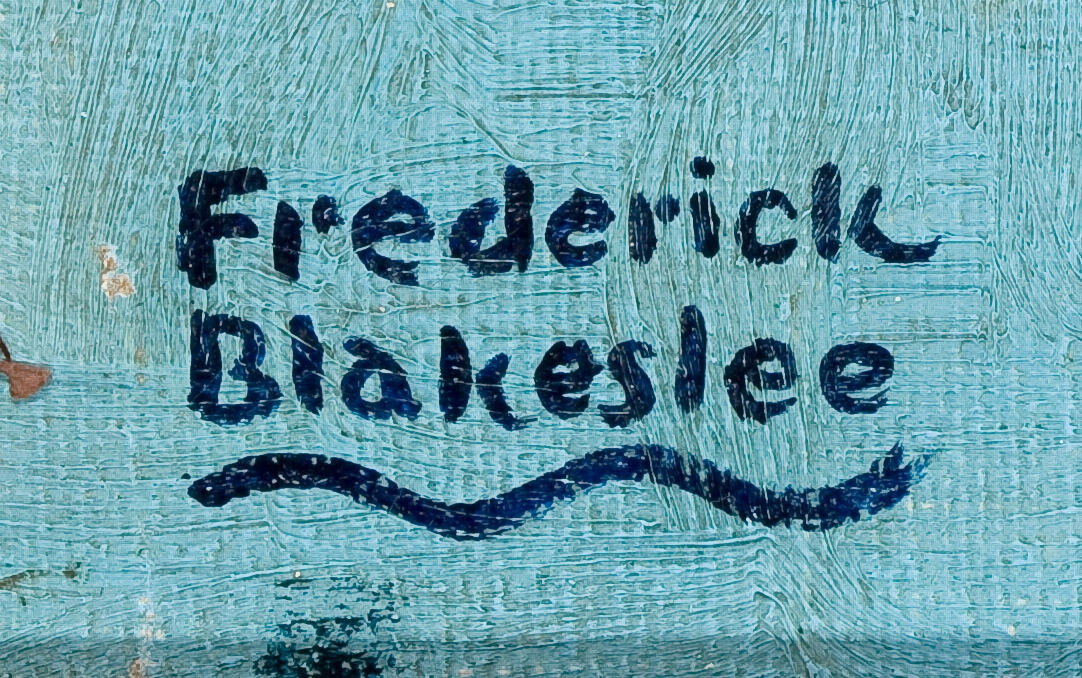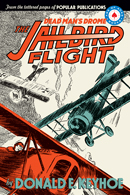 WHEN you’re collecting pulps after the fact rather than buying them off the newsstands you rarely acquire issues in their publication order. As such when you find a character or series, you don’t often read those stories in sequence. For some characters that is not essential, for other series you realize after reading two or three stories that you need to collect all the stories and then read them in order to appreciate the continuity that runs throughout the series. Such is the case with Donald Keyhoe’s Jailbird Flight.
WHEN you’re collecting pulps after the fact rather than buying them off the newsstands you rarely acquire issues in their publication order. As such when you find a character or series, you don’t often read those stories in sequence. For some characters that is not essential, for other series you realize after reading two or three stories that you need to collect all the stories and then read them in order to appreciate the continuity that runs throughout the series. Such is the case with Donald Keyhoe’s Jailbird Flight.
I discovered Keyhoe and his Jailbird Flight stories in Dare-Devil Aces. Here was a band of convicts who chose to die flying suicide missions and fighting for their country—the very country that condemned them to life in prison—rather than rot in said prison. They were a rough and tumble bunch assembled by Colonel Rand from the bowels of Blois:
The Flight, at is core, is comprised of Bruce Kirby—Below the Rio Grande he had once been known as “The Killer,†now he flew through hell skies, leader of the strangest squadron that ever dared face death from flaming Spandaus; “Big†Durgin, the hugest Jailbird of all, a mountain of a man with pile-driver fists and a fierce, battered face that masked the gruff kindness beneath his hard exterior; “Tiger†Haight, whose dark eyes ever smoldered as at some hateful memory, perhaps of the day which had turned his hair to silver, though he was but thirty—no one knew his past—no questions were asked in the Jailbird Flight; Cartwright, the tall, urbane Englishman who looked like a British lord; the lanky Tinker with his drawling humor and comical, homely face; and last and by no means least—Kid Denison who reminded Kirby of his ill-fated young brother who had been brutally sacrificed by a drug-mad S.C.! All bore the notorious brand—the sign of the Jailbird Flight—a broad arrow burned on the back of their right hand—but they made it stand for courage!
Dare-Devil Aces was my entry into air war pulps—they were plentiful and relatively cheaply priced at the time (this is like 15 or 20 years ago we’re talking). Finding most issues was relatively easy save for a few—the January 1935 issue which has G-8 appearing in Hogan’s Red Falcon story that month; a couple of 1934 issues—February and July; and the first year of issues from 1932. Condition was not really a concern at the time—I just wanted to read the stories. The initial core of my collection was a lot of 17 issues that Editor Emeritus Bill Mann sold me at PulpCon one year for $100!

THE OPENING SPREAD of “The Cyclone Patrol” by Frederick Blakeslee (February 1933, Dare-Devil Aces). This is not the original copy I had read, but an upgraded issue with the cover still attached. The previous owner, J.B., felt so strongly about this story that he printed his succinct review in the margin—”This story is NUTZ, , and so is KIRBY.”
Being familiar with Robert J. Hogan and G-8 and his Battle Aces, I initially read the Red Falcon stories in the issues. But my attention started to wander to the other stories in the wealth of issues as it does and that’s when I came upon the February 1932 issue and its lead story—”The Cyclone Patrol” by Donald E. Keyhoe. Frederick Blakeslee’s two page illustration for the story was shear pandemonium! At first glance, it appears to be two arrow emblazoned planes zooming down to strafe a bunch of armor-clad knights with rifles! Kooky. But as you study it more as you do—you start to notice that there are a bunch of much smaller figures running in fear and that Blakeslee’s perspective is not off and these knights are giants(!) and the smaller figures are normal-sized men! Reading the blurb at the bottom of the picture hooked me—
Pilots twelve feet tall—mammoth planes—rifles big as cannons—this was the squadron of giants, Bocheland’s newest sky horror. Armies fled in terror before them—until Killer Kirby took up their awful challenge, dared defy the strength of these super-aces with the gutty courage of his Jailbird Brood!
I had to read it! And I did—it was an electric story of a mad German Scientist, von Horde, who had appropriated another’s invention—the Q ray—to turn normal people into twelve foot tall giants which he planed on using to defeat the Allies once and for all. While trying to get into von Horde’s castle, Kirby comes across the Q-ray’s creator Kauben who wants to rescue his girl from von Horde’s clutches. They team up to break into his castle, smash the device, get the girl and put an end to von Horde’s mad schemes! It’s a great story—Kirby even comes upon one of his own Brood in von Horde’s dungeons that has been transformed into one of his giants—showing Kirby the enlarged scar on the back of his hand when he doesn’t believe it possible.
After finishing that story, I looked through my other issues to see if I had any more stories of this Jailbird Flight. At the time I had one other story—”The Red Lightning Ace”—as the blurb puts it: “For the Fourth time the Terror had struck What was this new War weapon—this terrible wheel of flame that roared out of the night skies to bring destruction—death—to all it touched? Grimly Kirby followed that fire sky trail, straight into the most hell-bent adventure he or his dare-devil Brood ever tackled.” More wacky WWI super-science action as only Keyhoe could write it!
In looking for The Jailbird Flight in indexes I found there were only two more stories in Dare-Devil Aces in issues I didn’t own at that time as well as one in the first issue of Battle Birds which would precede the four Dare-Devil Aces stories, and seven earlier tales in the even harder to find Battle Aces. A whole wealth of stories—12 in all—I just had to find them.
So I would haunt eBay and AbeBooks and similar places and do websearches and such and over the years I was able to get the other two stories in Dare-Devil Aces and the last two Battle Aces stories—for some reason, the later 1932 issues of Battle Aces seemed to be easier to find that the 1931 or earlier ’32’s.
When we started Age of Aces Books in 2007, I always had a goal of getting all the Jailbird stories so we could collect them into a book. As it turns out—two books. We discussed printing them out of order or maybe just the Dare-Devil Aces stories just to get them out there, but in the end we decided we should do them in order in two volumes. As it worked out, the story in the first issue of Battle Birds—”The Jailbird Patrol”—works as a great introduction to the series and so it and the four Dare-Devil Aces stories could be one book while the seven stories from Battle Aces of various lengths would be the first volume.
I was finally able to track down the first five Jailbird stories through eBay—the hardest to obtain being the March 1932 issue with a Red Baron cover! When I finally got the first Jailbird story from the September 1931 Battle Aces around Thanksgiving 2013 I read it with excitement! I wasn’t sure what to expect—if it would contain the oft mentioned incident that landed Kirby in Blois—the killing of his drug-addled S.C. who had sent his green-pilot of a younger brother on a suicide mission—or maybe the formation of the Brood—or would it just start already in existence. “The Jailbird Flight”—the first story—was a present. It contained everything! The first chapter is one of the best aviation tales I’ve read—there we meet Bruce Kirby coming back from patrol when he comes upon an obviously inexperience flight of Allied pilots being attacked by von Falke’s Hate Staffel! Amongst the besieged is Kirby’s own little brother! whom he see’s gunned down before his eyes! Crazed he returns to his base and confronts the S.C. only to find him hopped up on drugs unable to handle his job. Kirby offers him a fair chance to defend himself as he had done in his life before the war south of the Rio Grande.
Killer Kirby stood like a statue, facing him. His hands hung at his sides, but the fingers were curled like talons. When he spoke his voice was strange and unnatural.
“Better take that drink, Dorsey,” he said. “It’s the last drink you’ll get this side of hell.”
An awful pallor crept into Dorsey’s face under the jaundiced skin.
“What do you mean?” he whispered. His right hand crept toward the desk.
“Jimmy—my brother.” A strange film came over Kirby’s eyes. The pupils had become mere pin points, black, menacing. “He’s dead, and it was you who killed him!”
Dorsey sank back before the look in Kirby’s face.
“No, no,” he cried. “I swear to God I didn’t mean to do it! You can’t—”
“Draw your gun!” rasped Kirby. “It’s there in your desk. Draw it—or I’ll burn you down!”
“It’s murder!” Dorsey shrieked. “You’re mad—”
“Murder! Yes, and you murdered him! Draw!”
With a crazy scream, Dorsey jerked his pistol from the drawer. His hand threw the weapon upward. Instantly, Kirby’s hand flashed down. The gun seemed to leap into his clutching fingers. There was a crash as two shots came at once. Dorsey’s face turned a hideous gray as he staggered back. His gun fell from his hand. Suddenly he crumpled up and fell like a log.
Startled voices sounded outside. Men burst into the squadron office. Kirby turned and faced them. He held out his pistol butt foremost, while a red stream trickled from his left arm.
“Here’s my gun,” said Kirby slowly. His face was black as granite. “You needn’t call the surgeon. I shot him through the heart.”
Chapter two picks up as Kirby sits a dank cell in Blois awaiting eventual transfer to the Federal Prison at Leavenworth, Kansas to be imprisoned for the rest of his life. That is until Colonel Rand shows up and makes Kirby an offer—one he initially turns down until he hears their first mission will be a suicide flight against von Falke and his Hate Staffel!
And that’s just the beginning!
Our new book The Jailbird Flight: Dead Man’s Drome collects those seven hard to find stories from the pages of Popular Publication’s Battle Aces. As a Labour Day Special to whet your appetite, here are the first two chapters of the first story to get you hooked!
The Jailbird Flight: Dead Man’s Drome, like all Age of Aces Books, can be order from Adventure House, Mike Chomko Books, and, of course, Amazon!
 Like many in the late 20’s and early 30’s, Robert O’Neil was fascinated with aviation and as such, a large part of both volumes of his scrapbooks is taken up with a cataloging of the many different types of planes. But amongst all the planes and air race flyers and info on Aces are some surprising items.
Like many in the late 20’s and early 30’s, Robert O’Neil was fascinated with aviation and as such, a large part of both volumes of his scrapbooks is taken up with a cataloging of the many different types of planes. But amongst all the planes and air race flyers and info on Aces are some surprising items.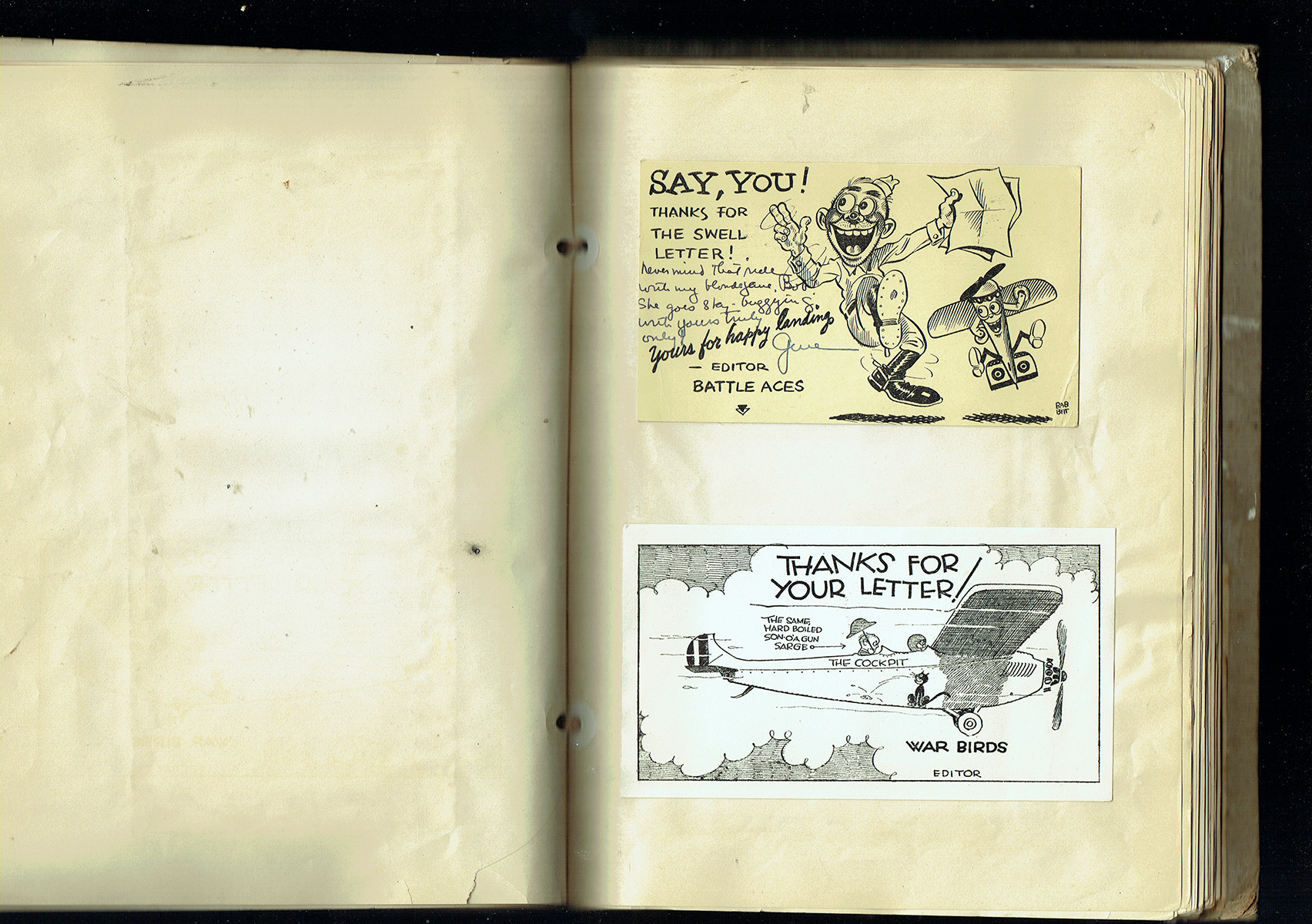





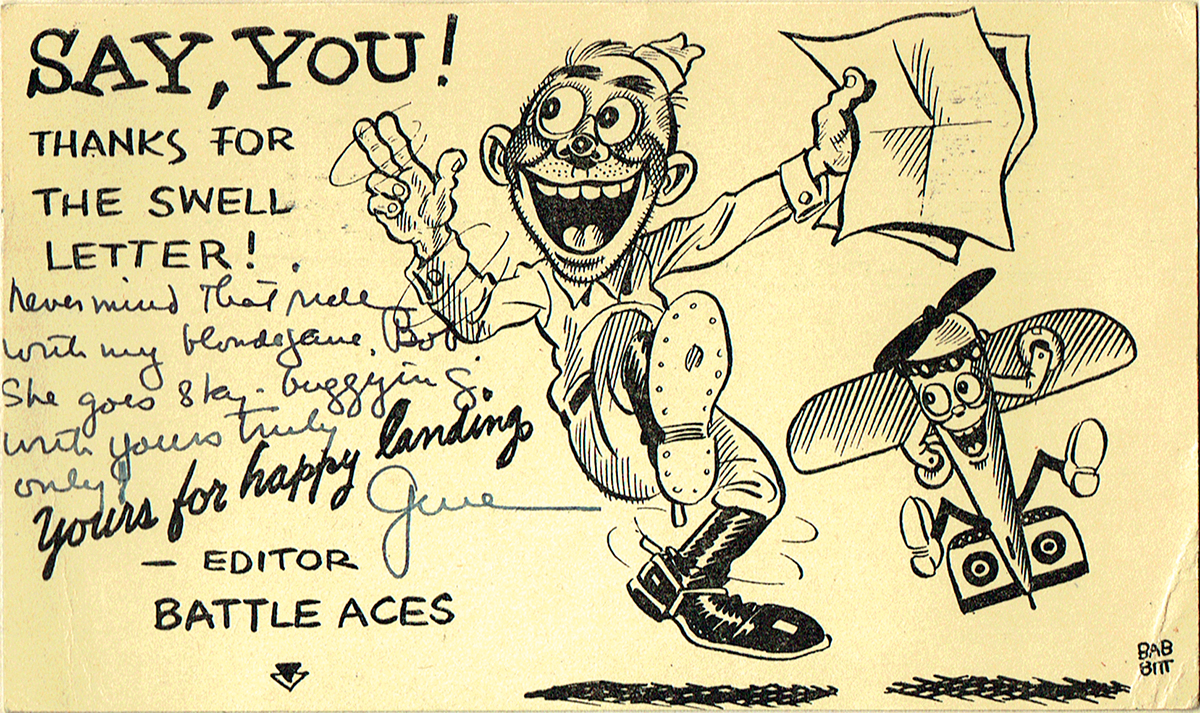
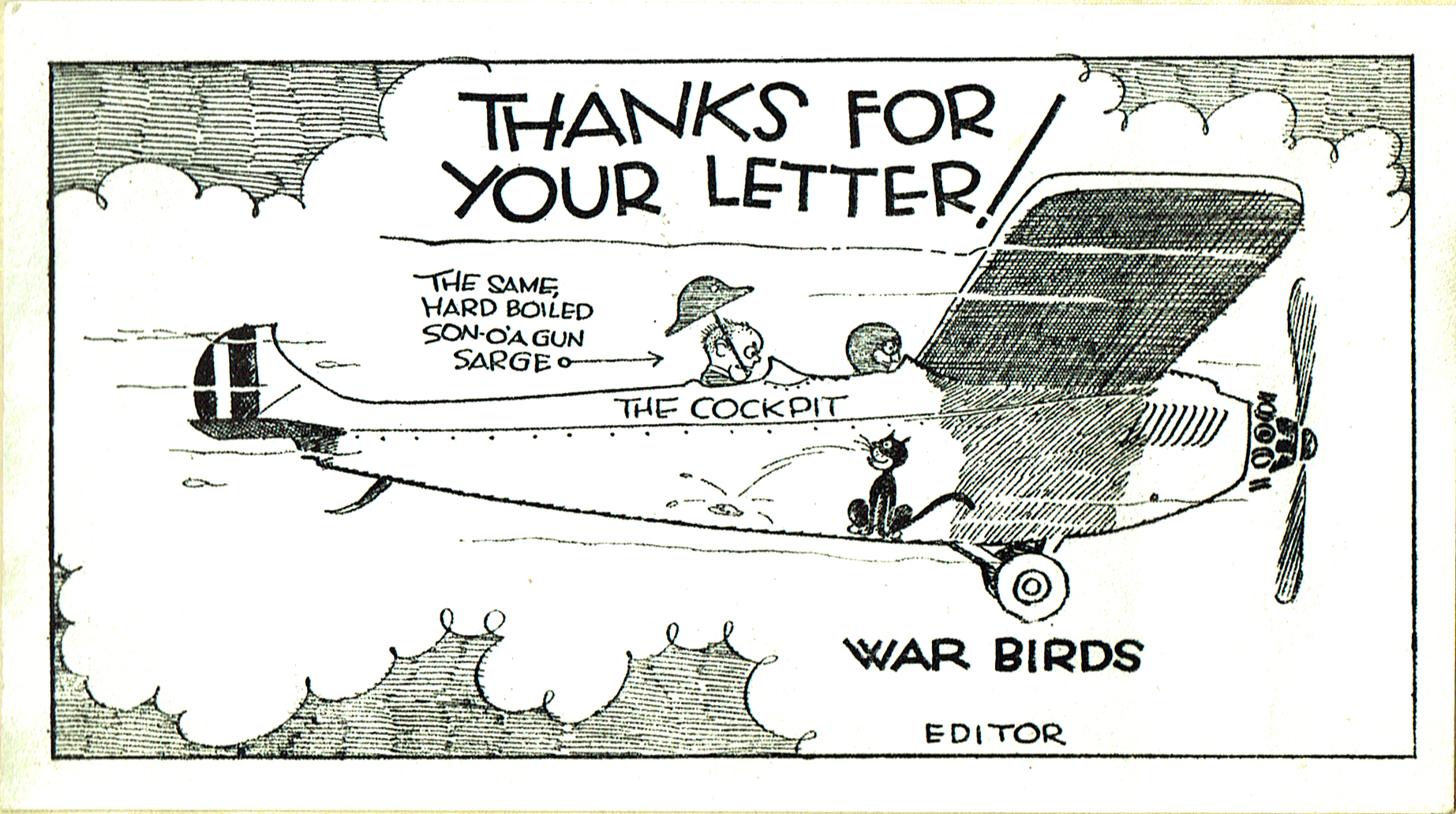




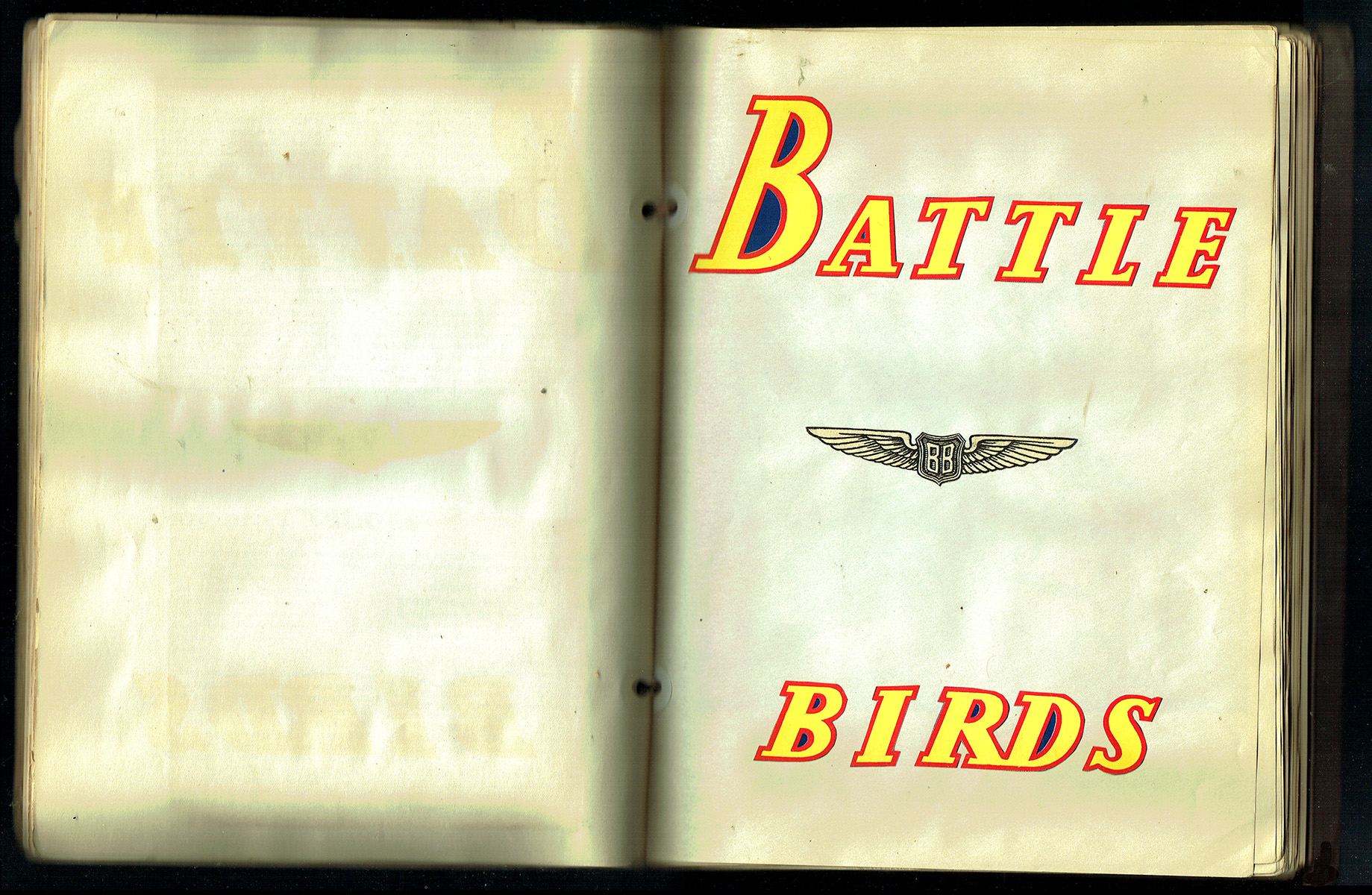
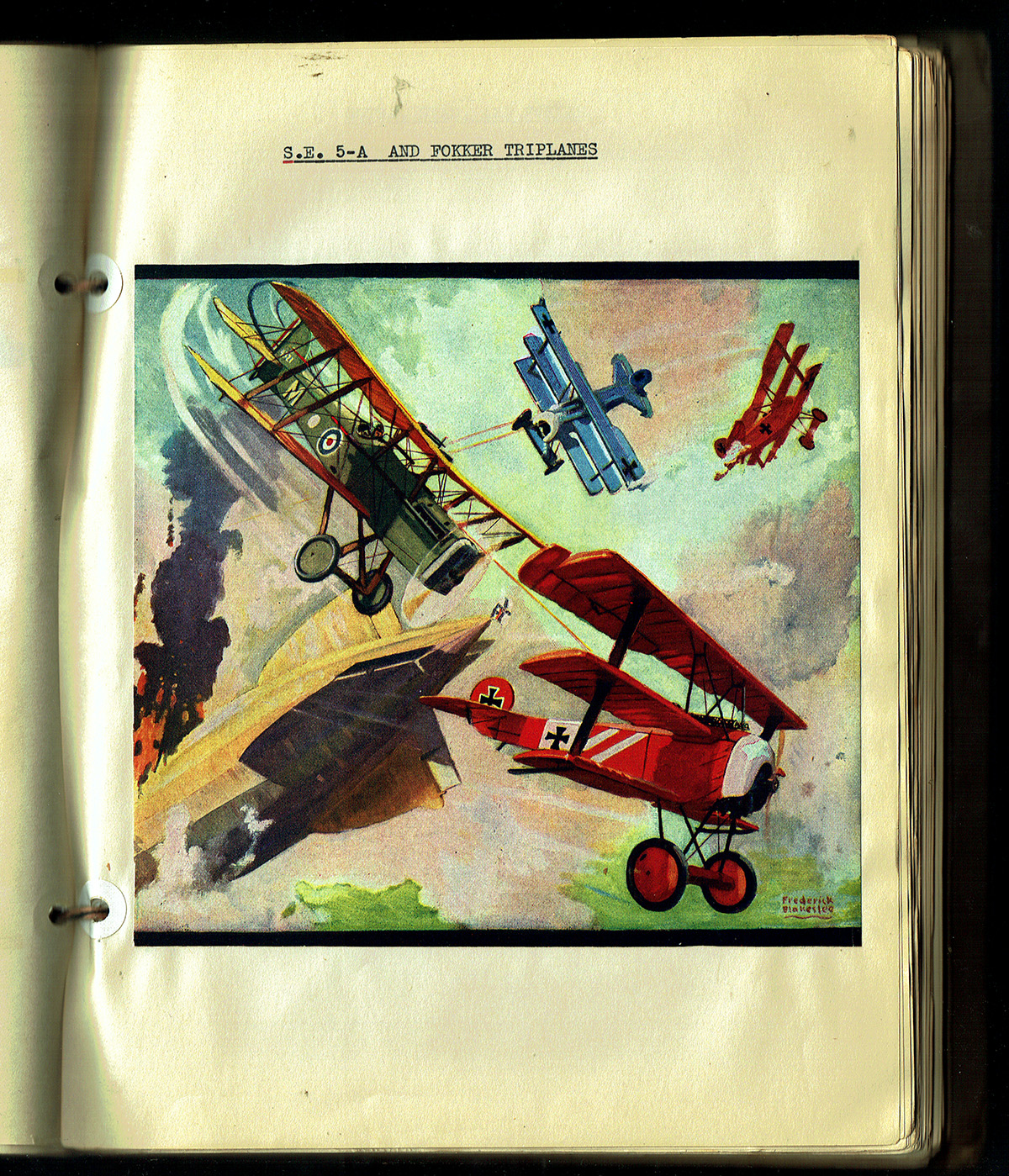
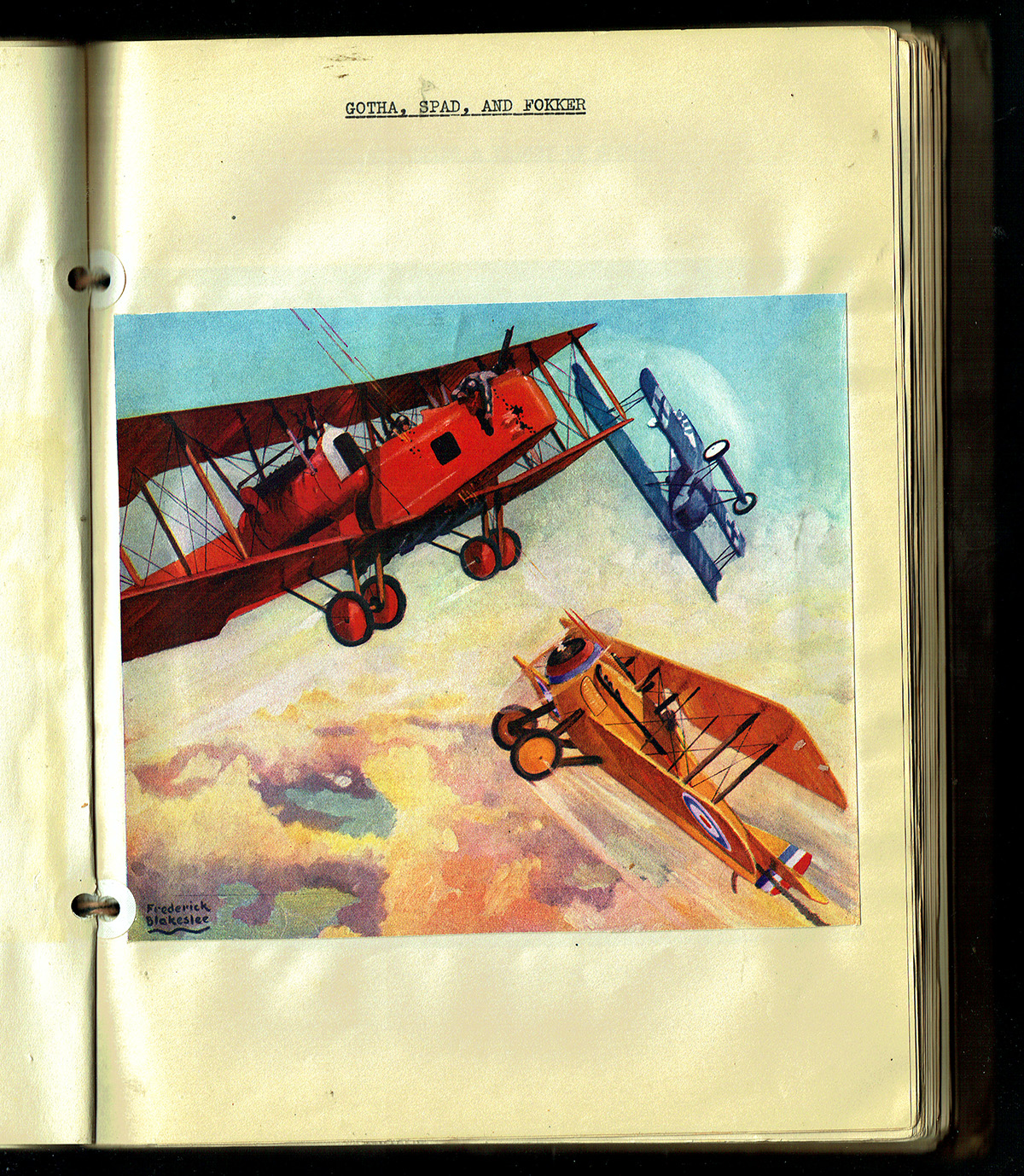
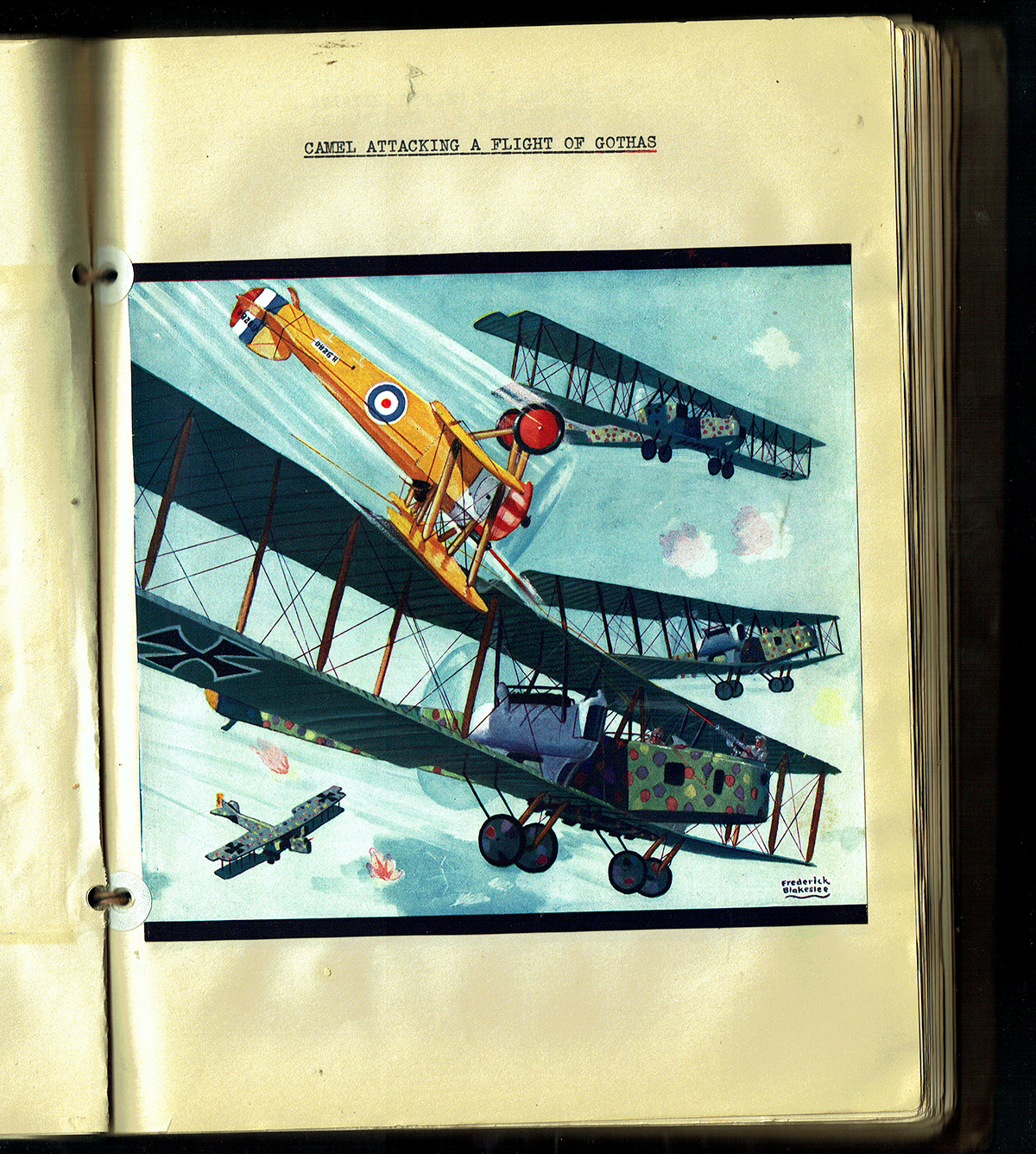
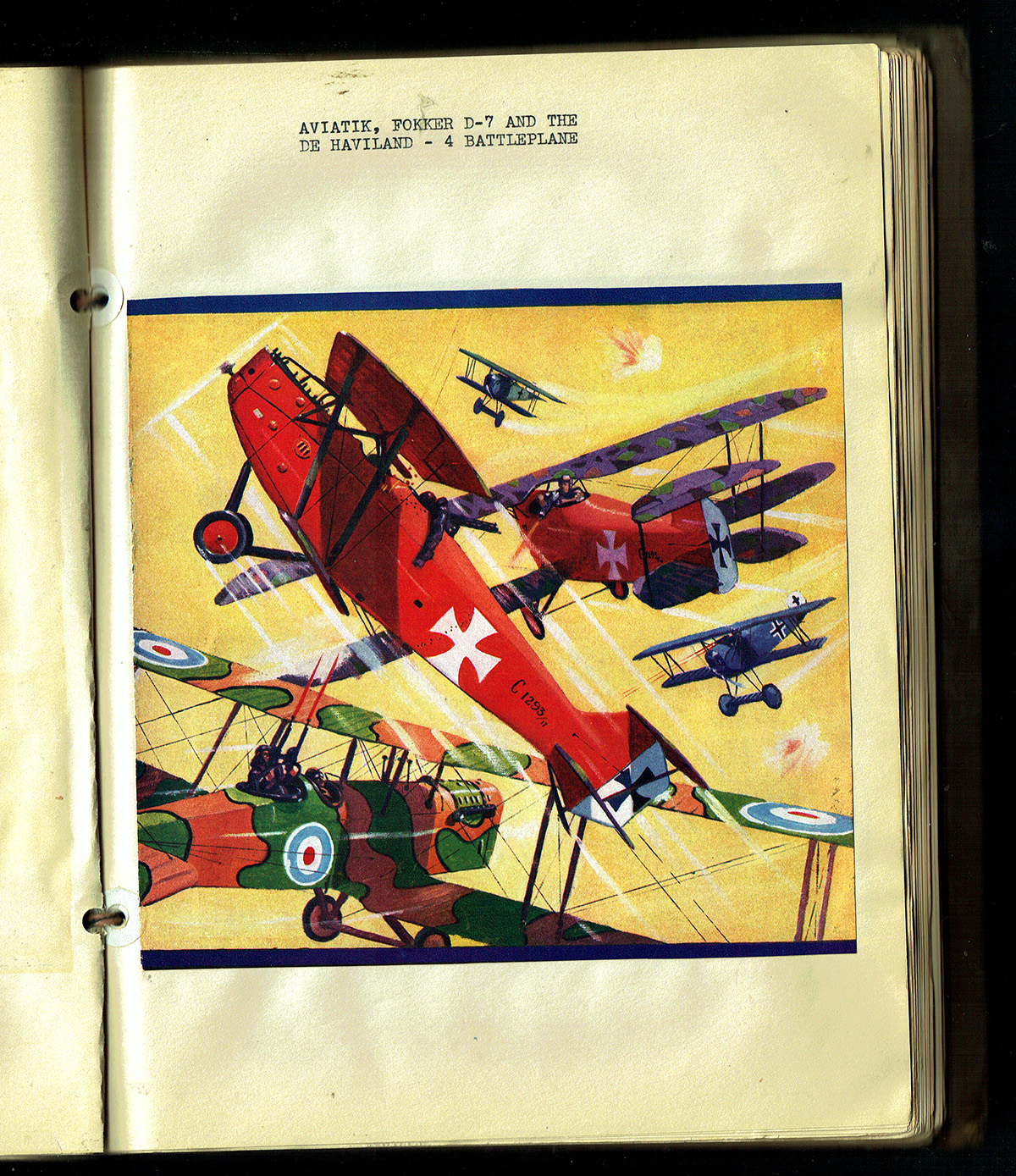
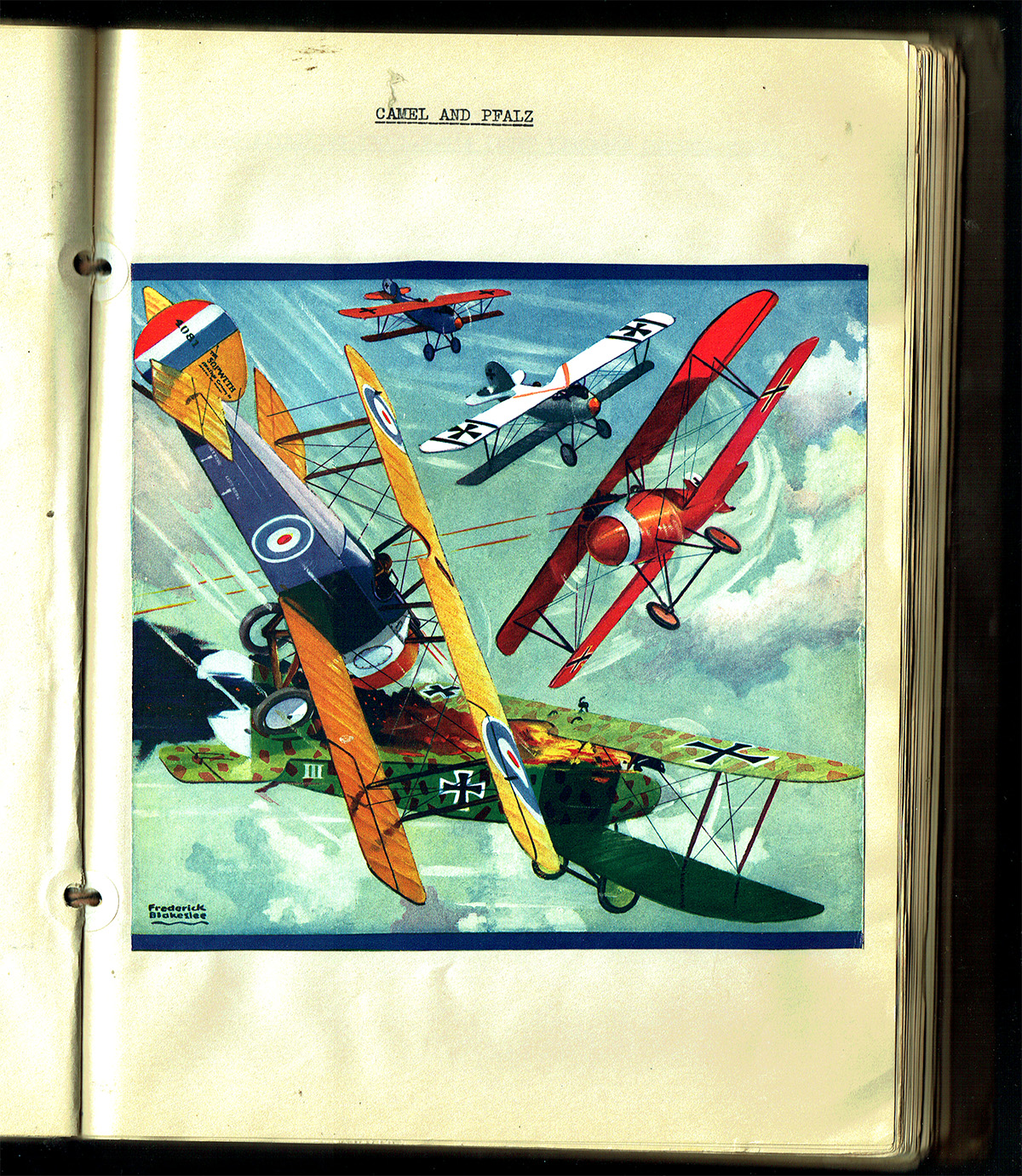
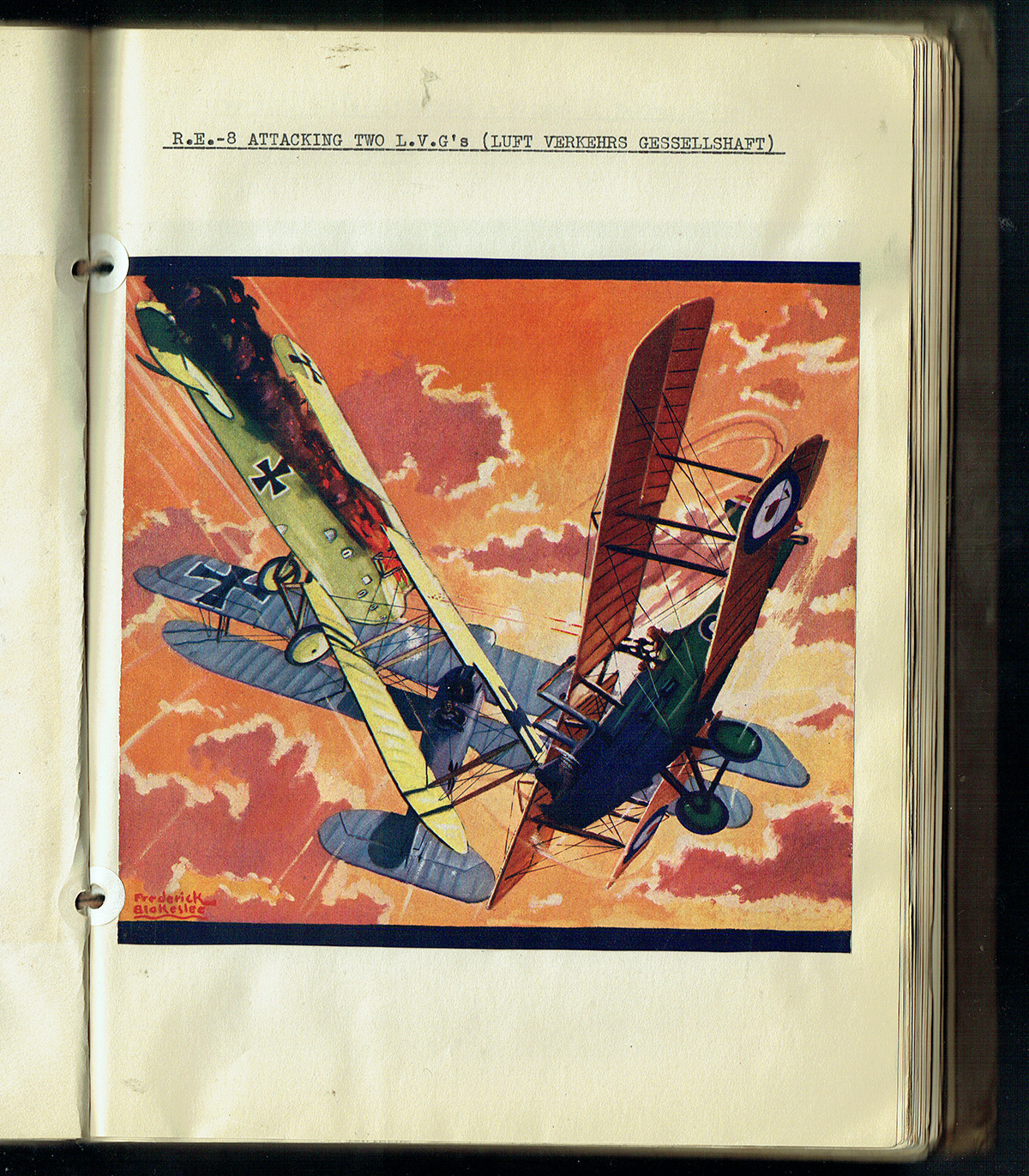
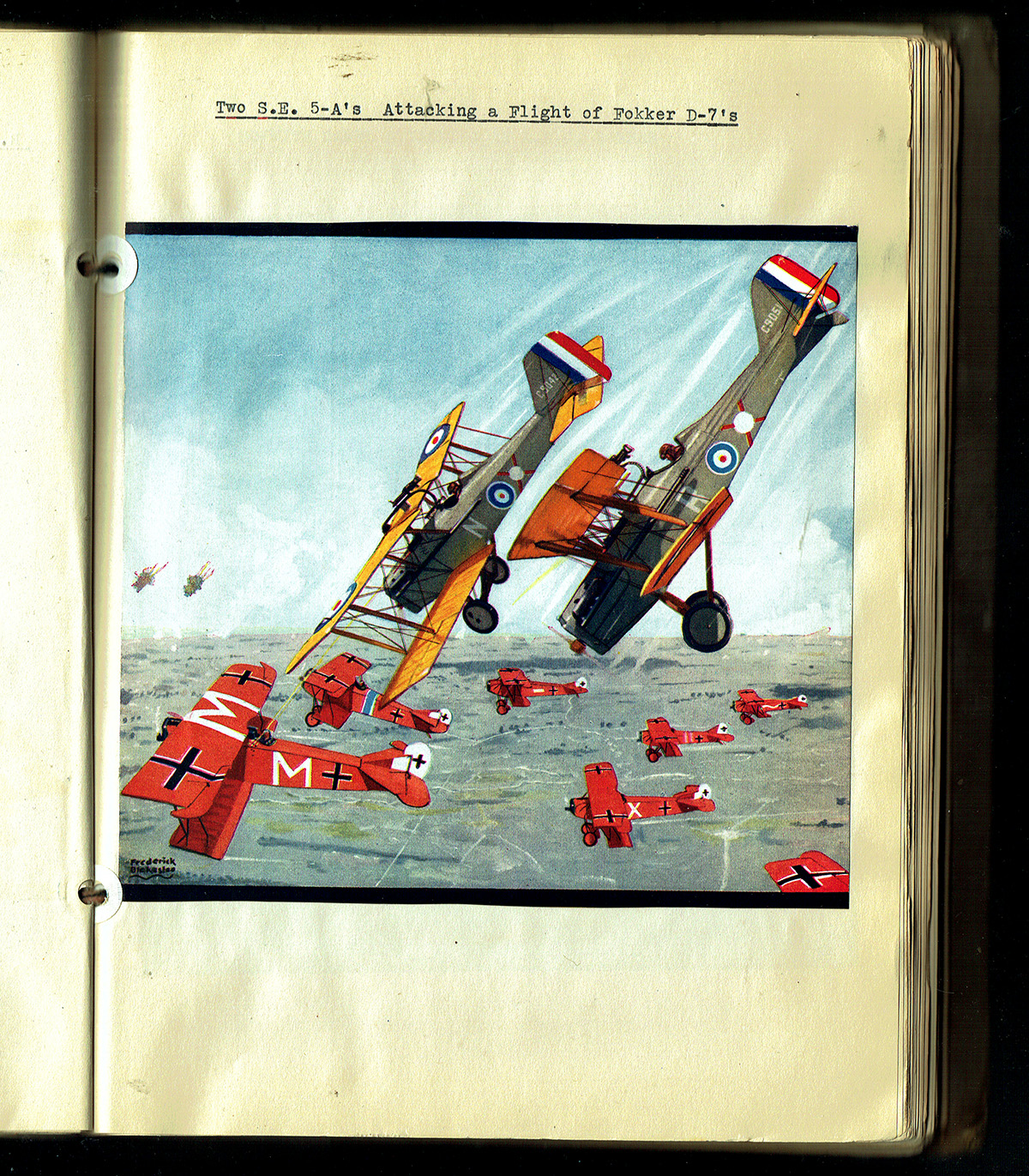
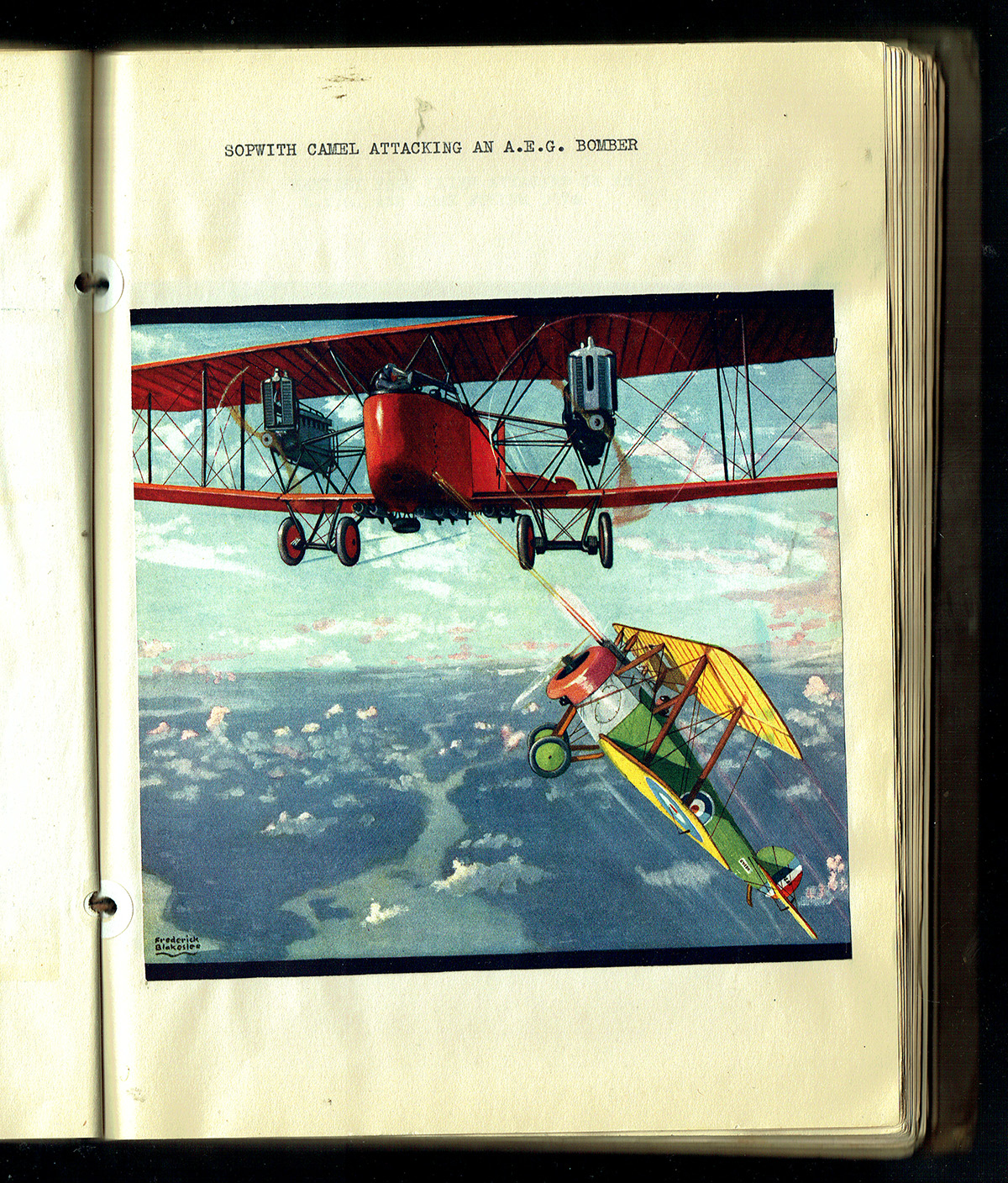
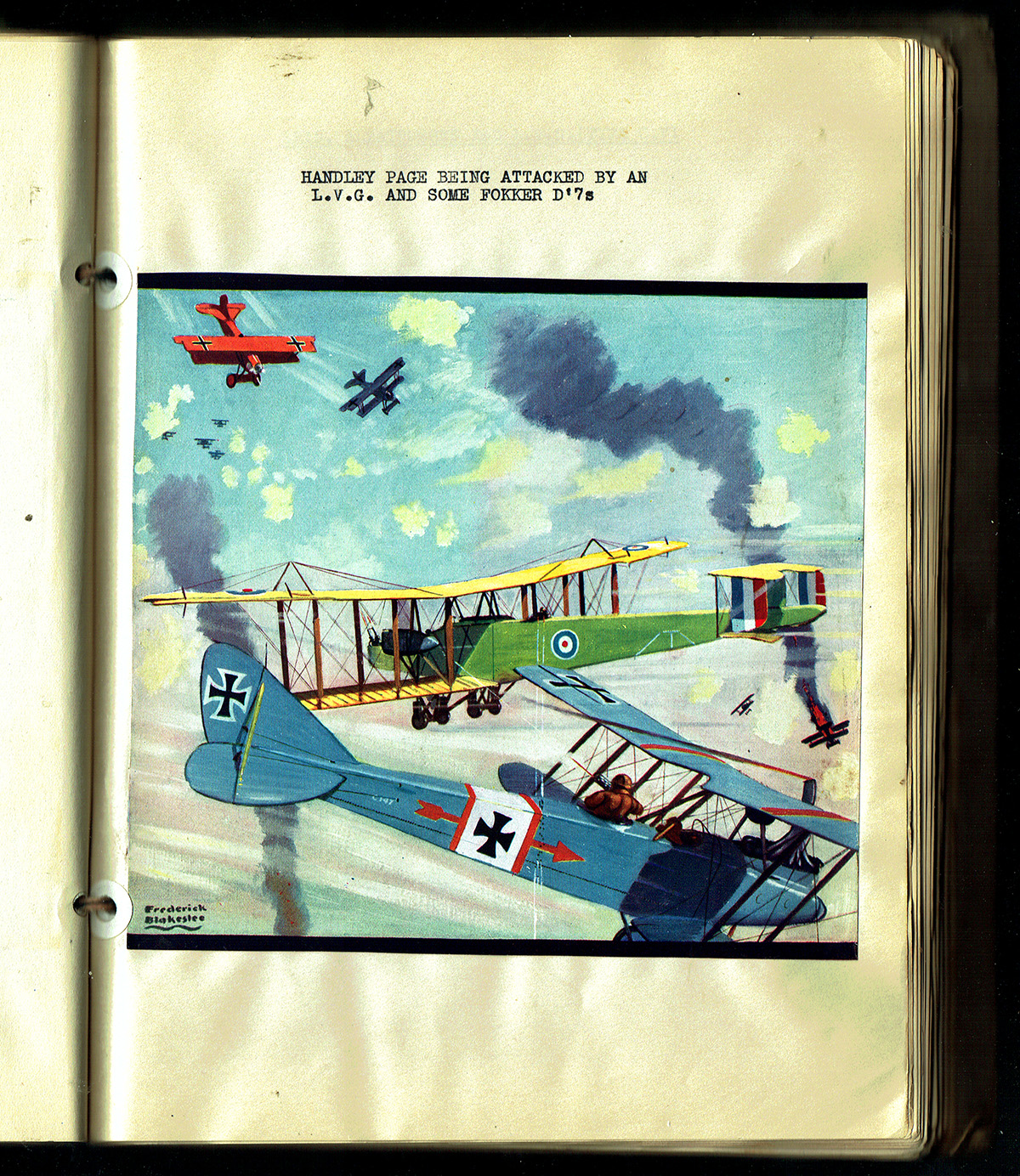
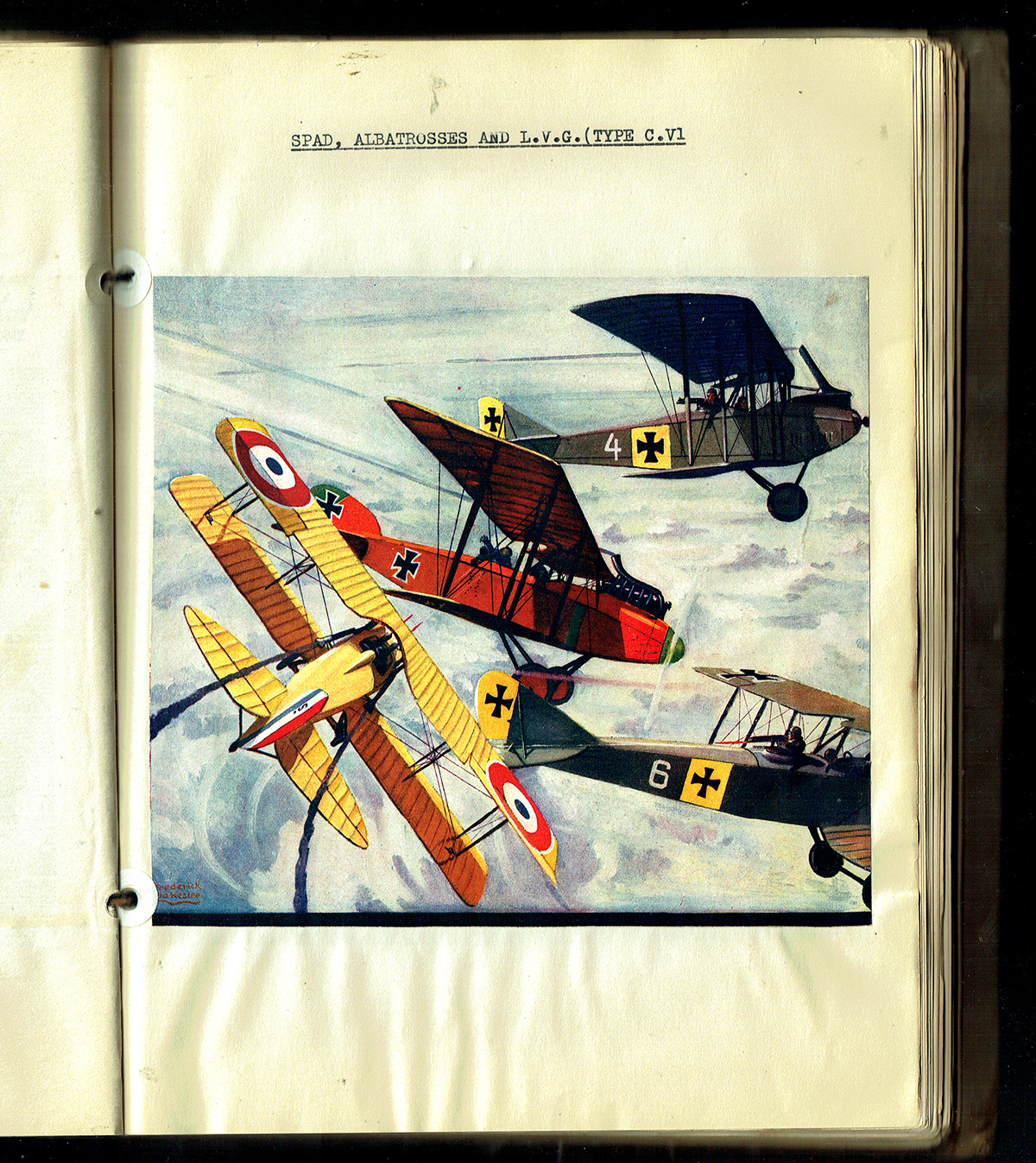
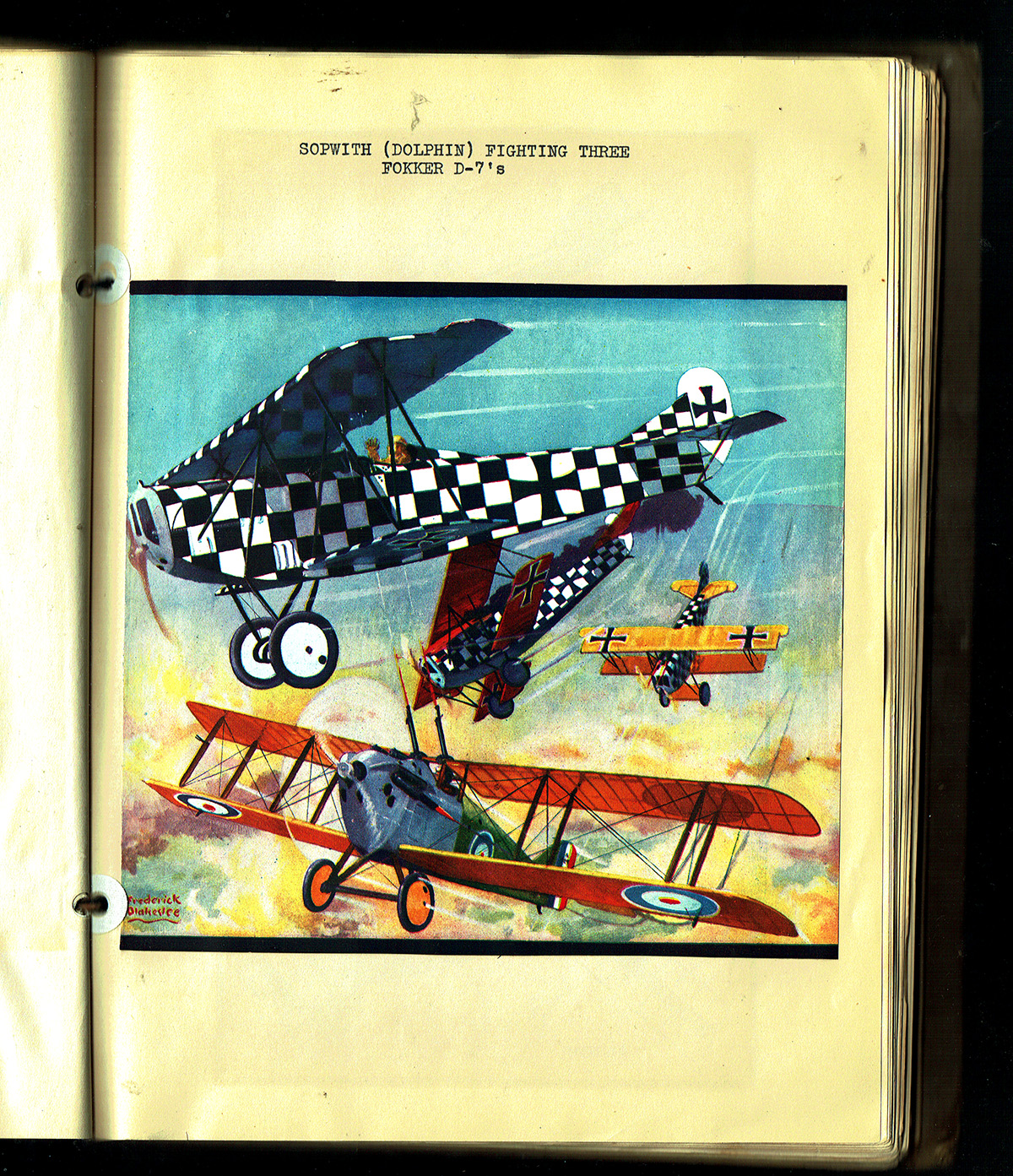
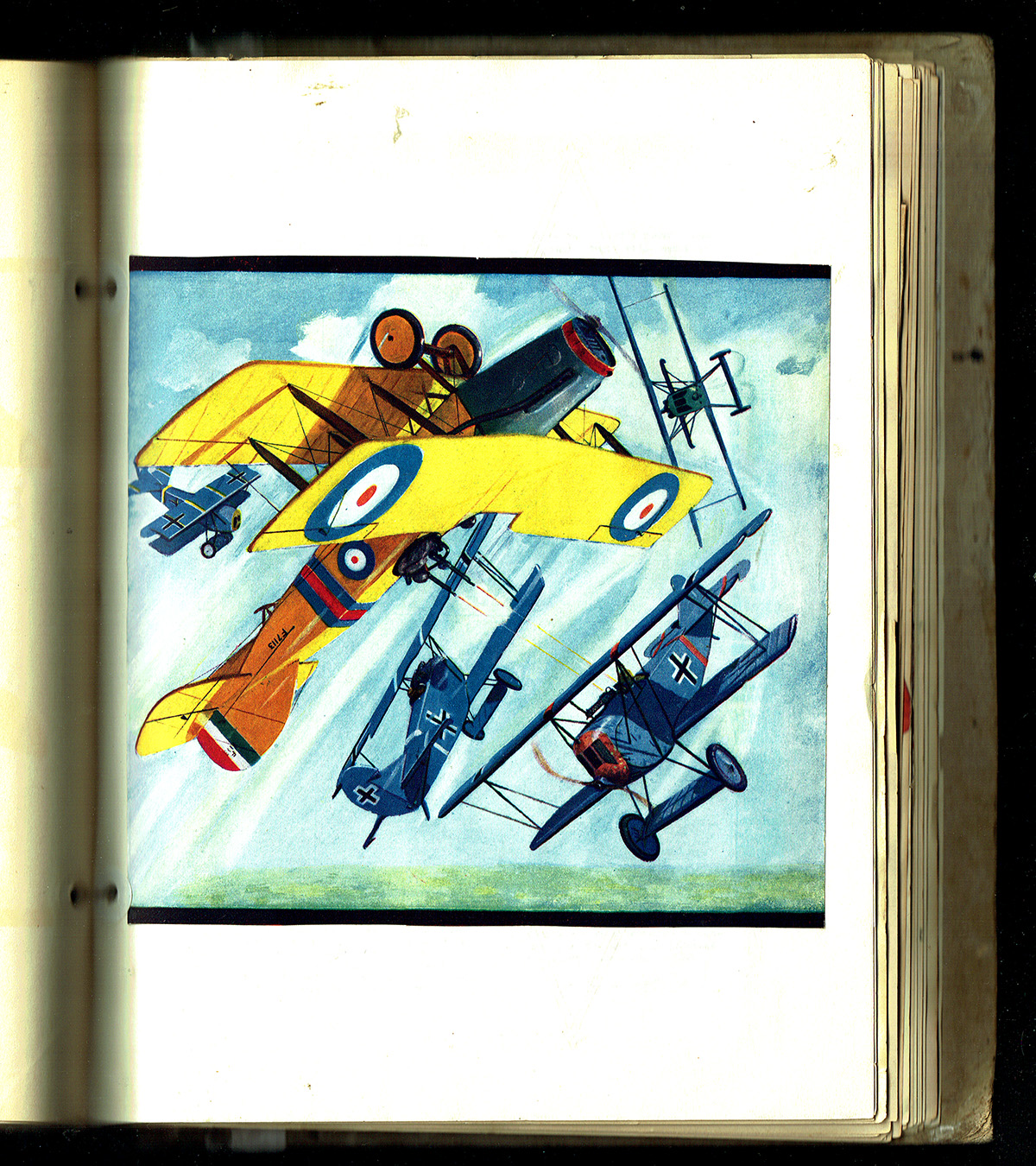
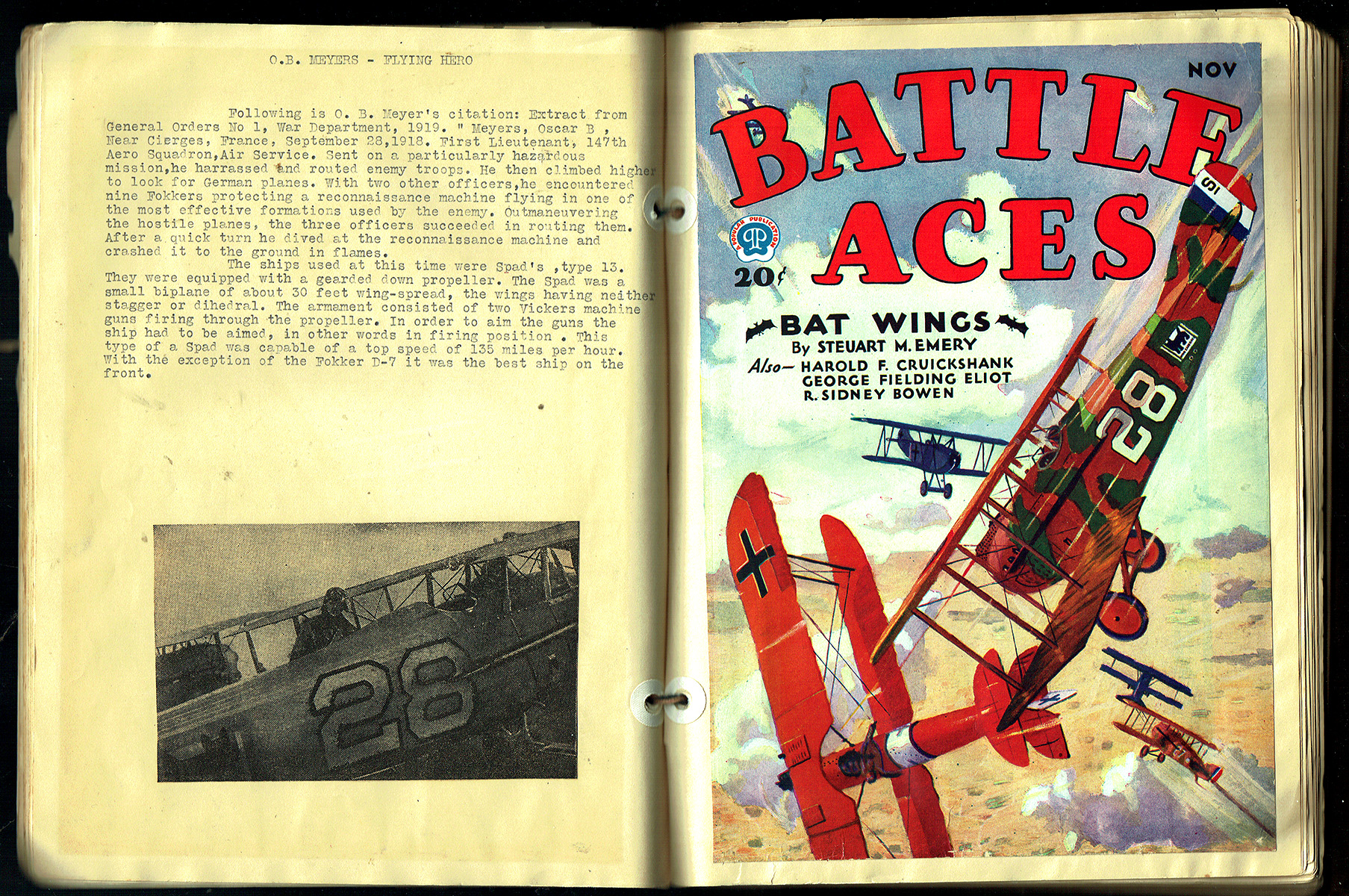
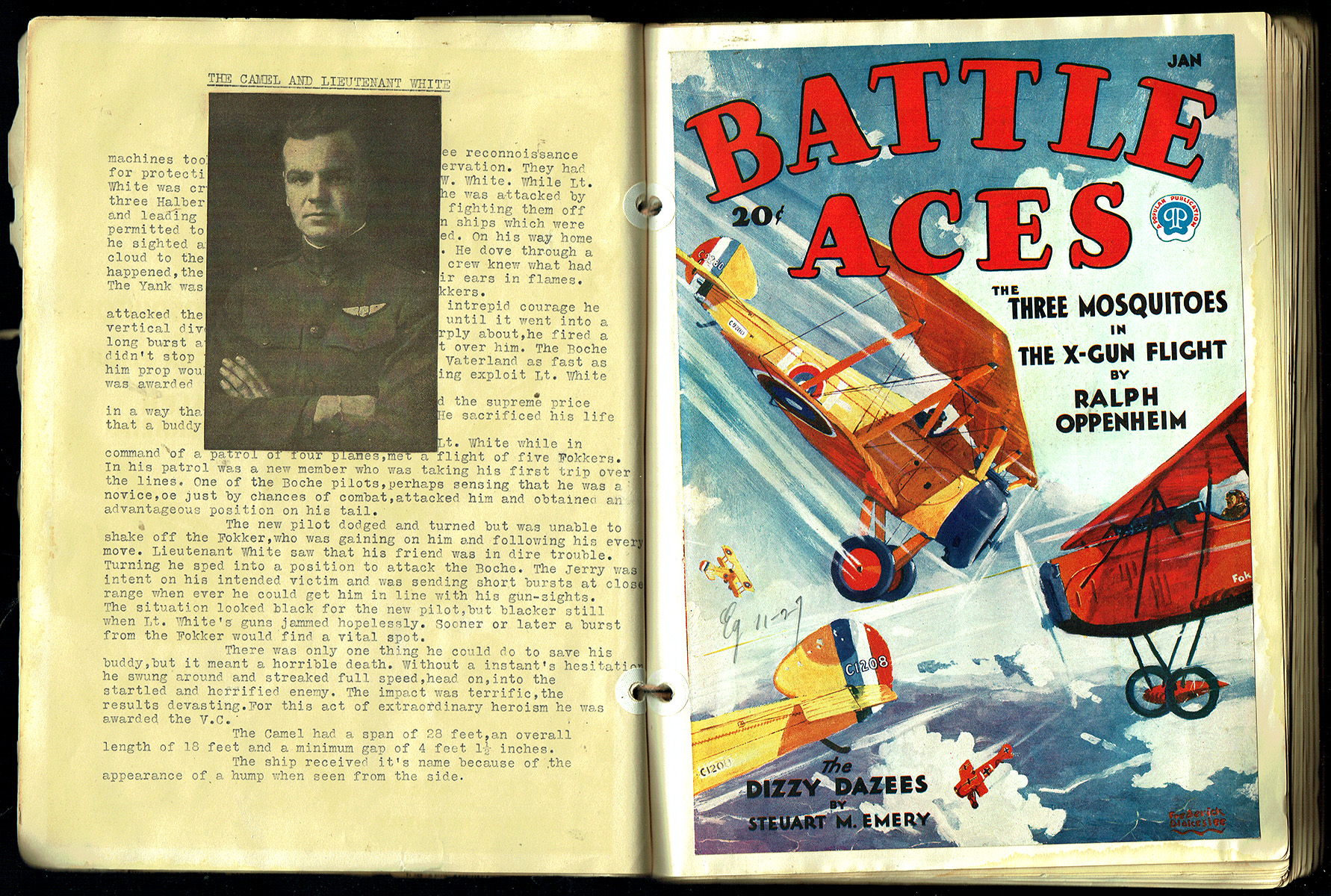
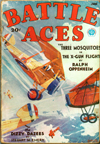
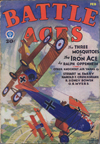
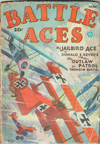

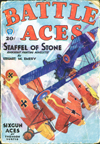
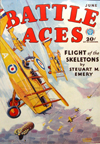
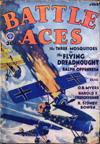
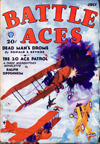
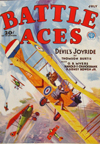
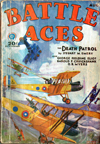
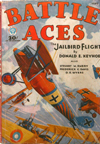
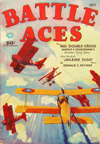
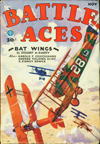
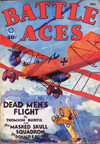
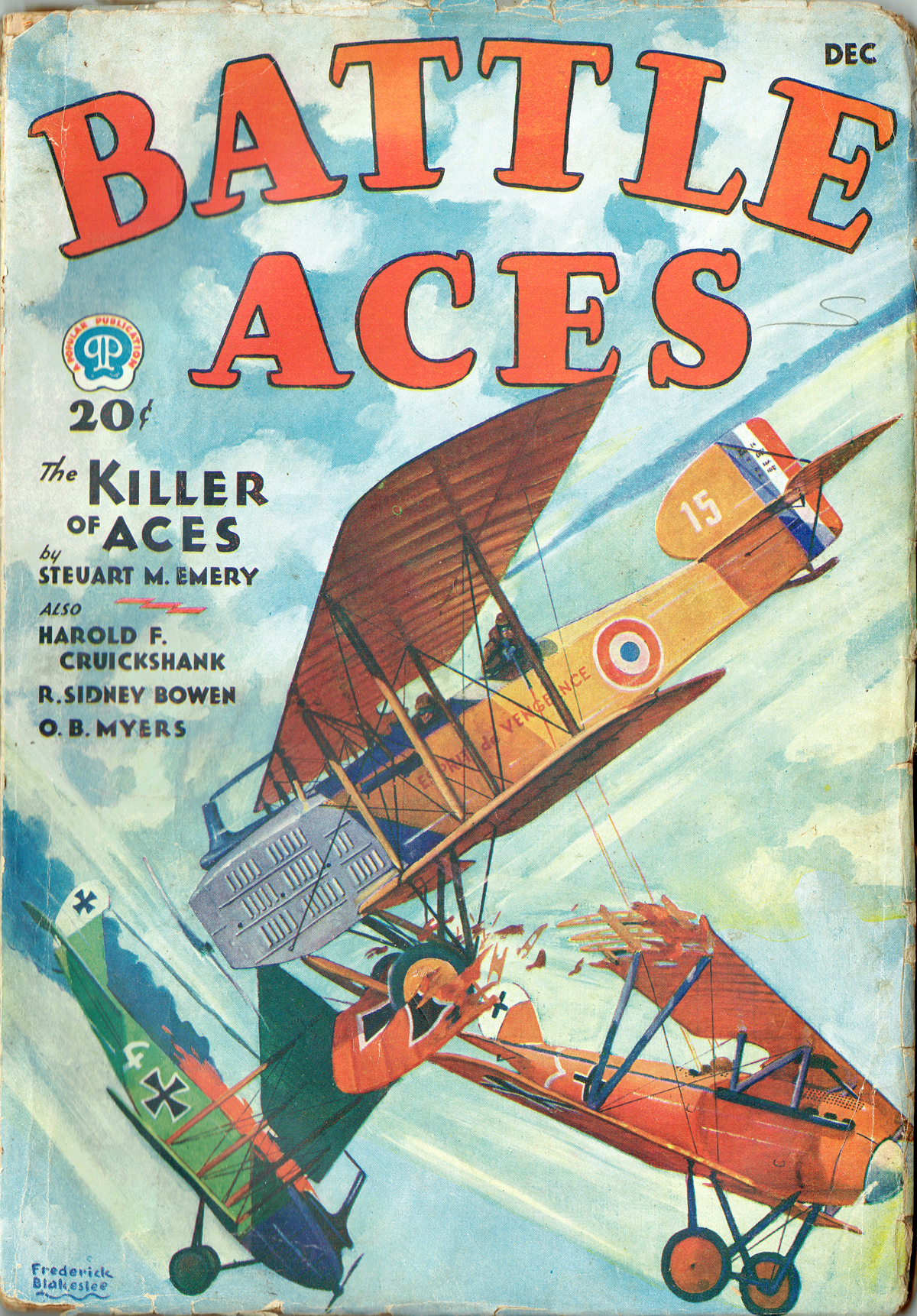

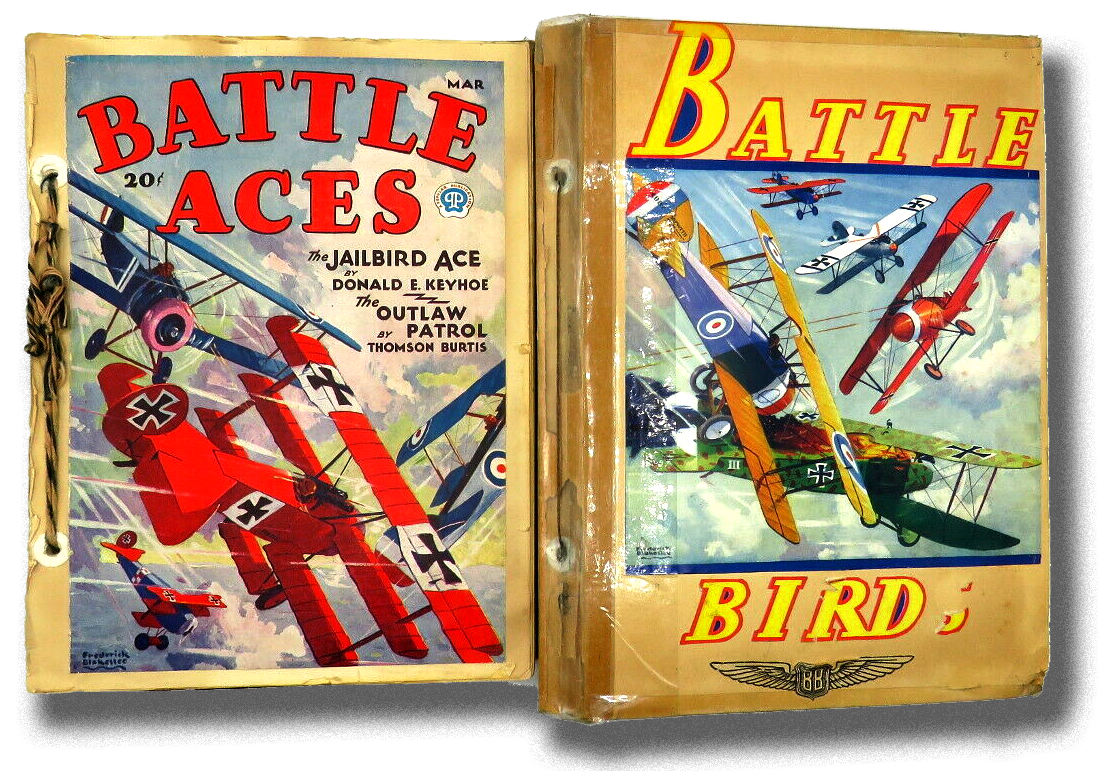
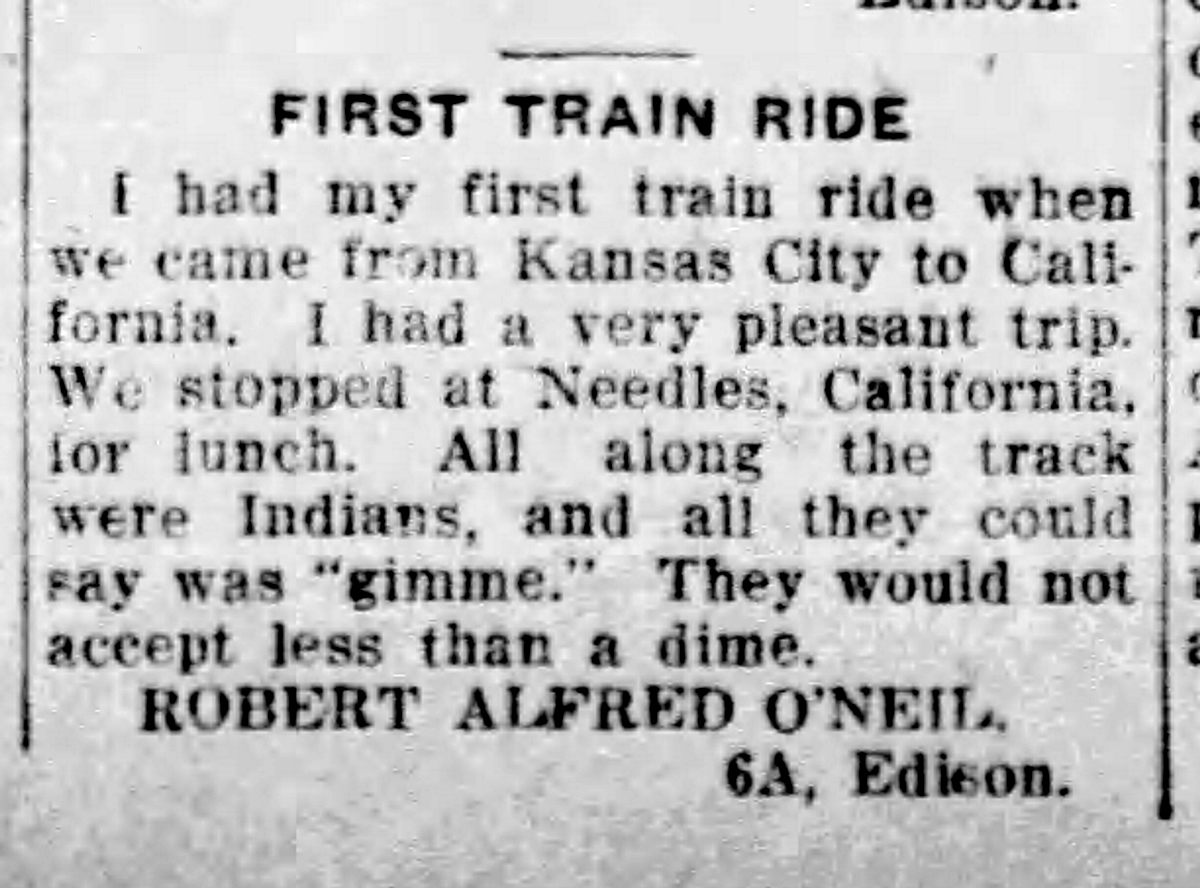
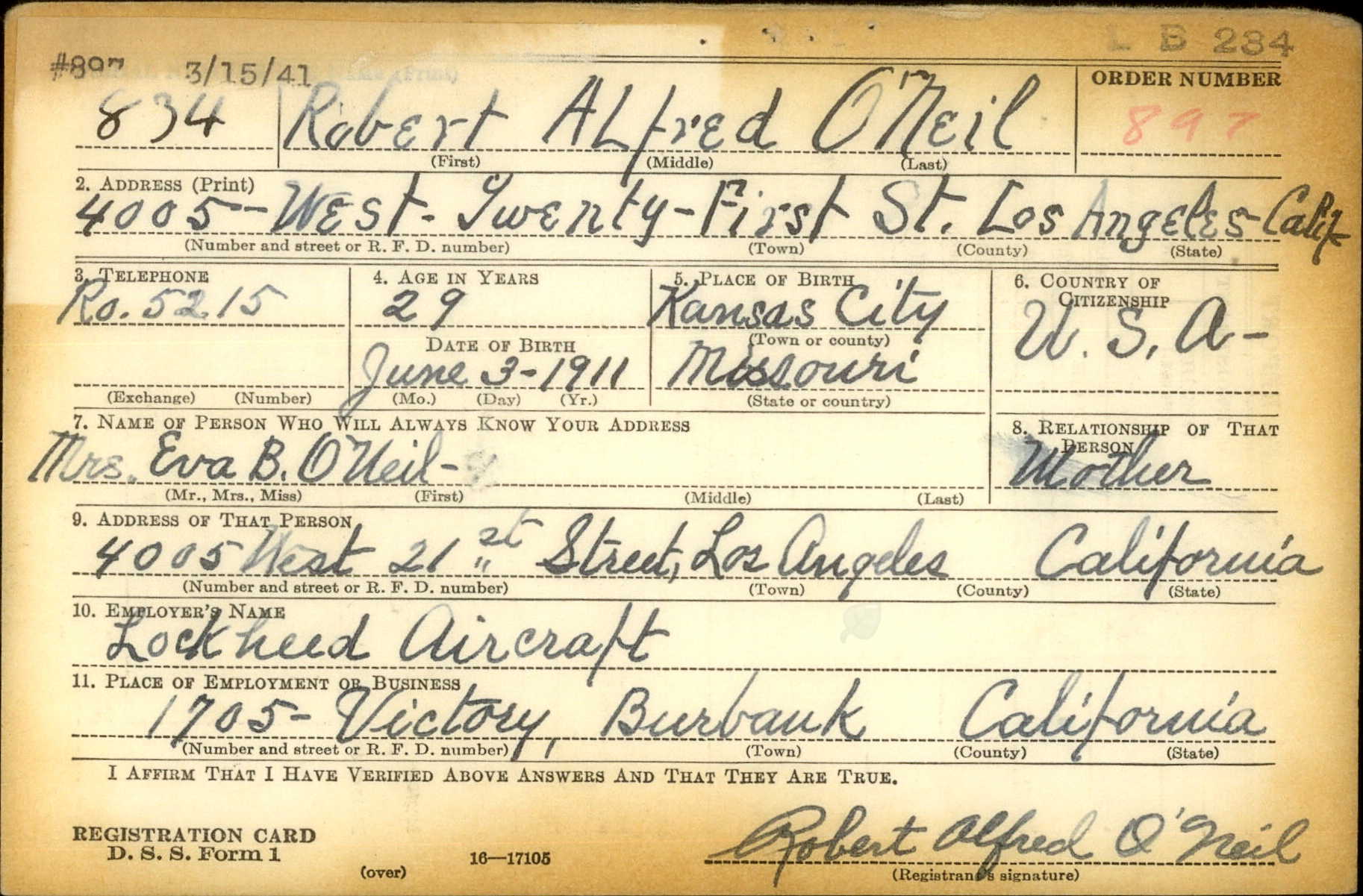


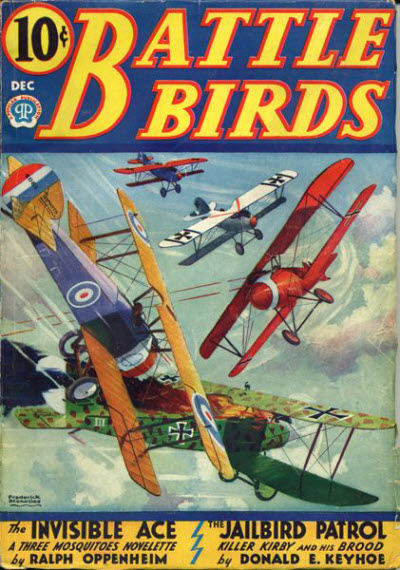 The Battle Birds Club was open to all air-minded readers. Anyone could join by simply stating they wanted to and they would be sent a blue membership card. This card would display the members group-squadron-flight number, derived as follows: The country would be broken down into three regions—these three being the 1st, 2nd, and 3rd Pursuit Groups—and a fourth, FL, for foreign readers classified in the ‘Foreign Legion’; each state a squadron number; and every 8 members within said state a lettered flight as they are recorded.
The Battle Birds Club was open to all air-minded readers. Anyone could join by simply stating they wanted to and they would be sent a blue membership card. This card would display the members group-squadron-flight number, derived as follows: The country would be broken down into three regions—these three being the 1st, 2nd, and 3rd Pursuit Groups—and a fourth, FL, for foreign readers classified in the ‘Foreign Legion’; each state a squadron number; and every 8 members within said state a lettered flight as they are recorded.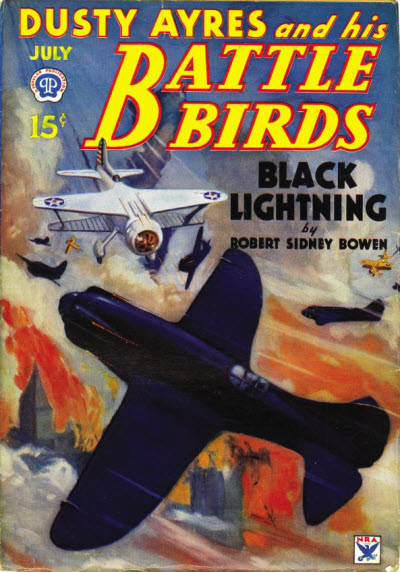 WITH the July Issue, BATTLE BIRDS changes it’s name to DUSTY AYRES and his BATTLE BIRDS and it’s focus. The lead story will now feature the exploits of Dusty Ayres and his Battle Birds and what could happen in a possible future war. The Battle Bird Club continues, but will now be known as the
WITH the July Issue, BATTLE BIRDS changes it’s name to DUSTY AYRES and his BATTLE BIRDS and it’s focus. The lead story will now feature the exploits of Dusty Ayres and his Battle Birds and what could happen in a possible future war. The Battle Bird Club continues, but will now be known as the 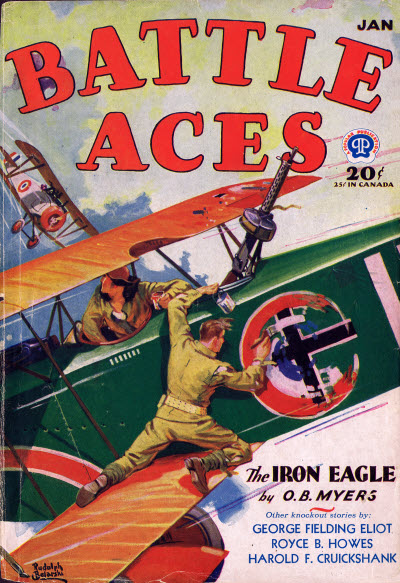 Canada’s very own
Canada’s very own 